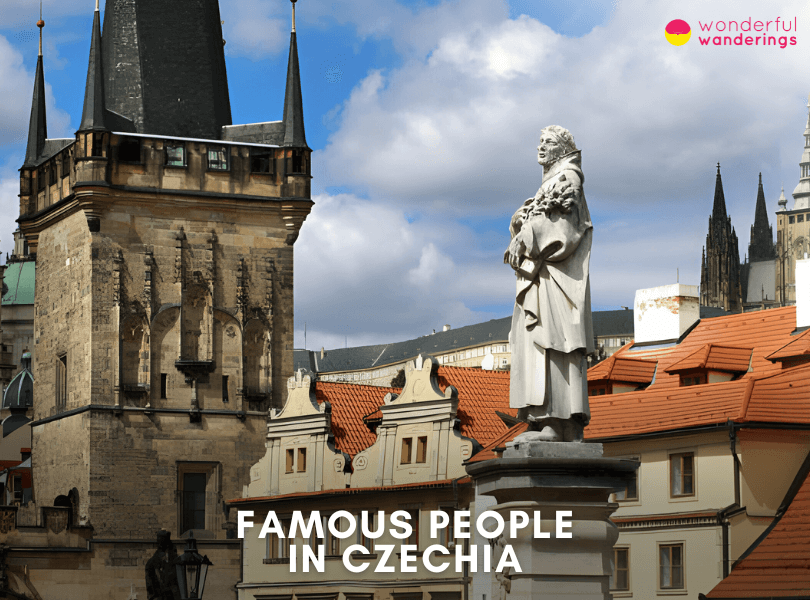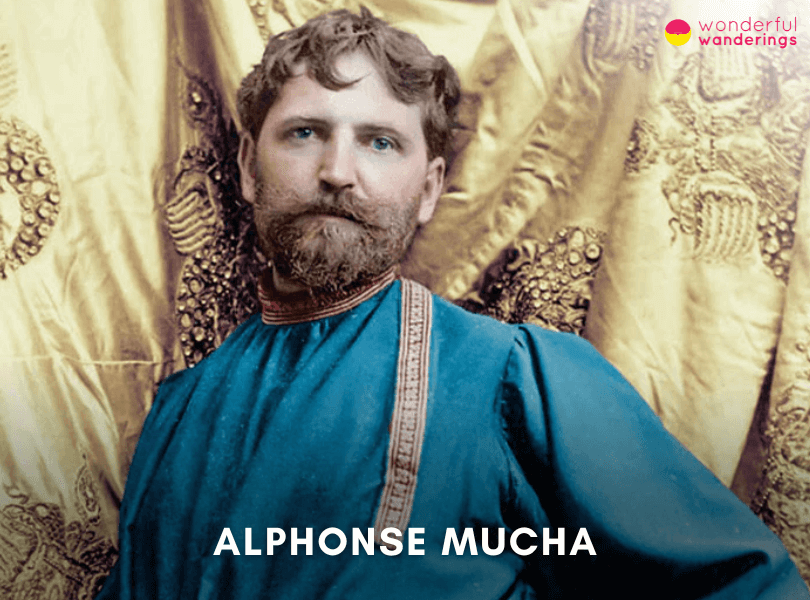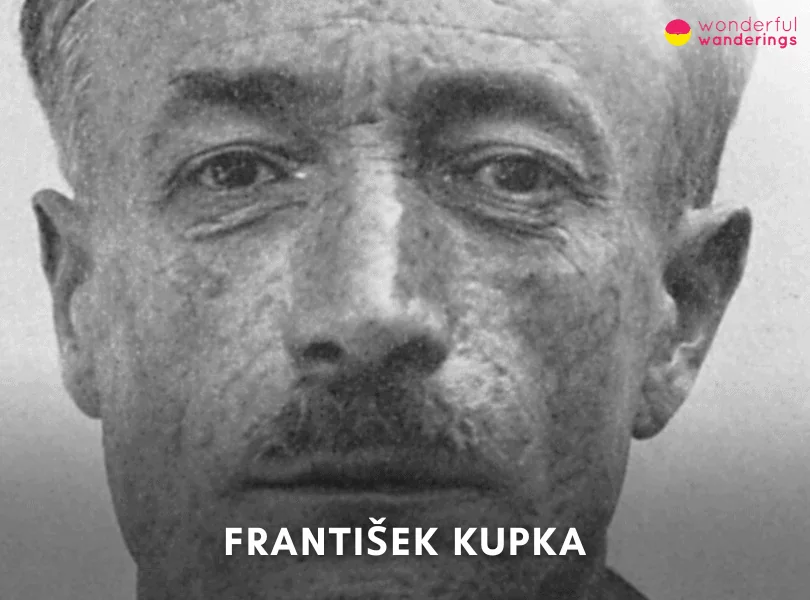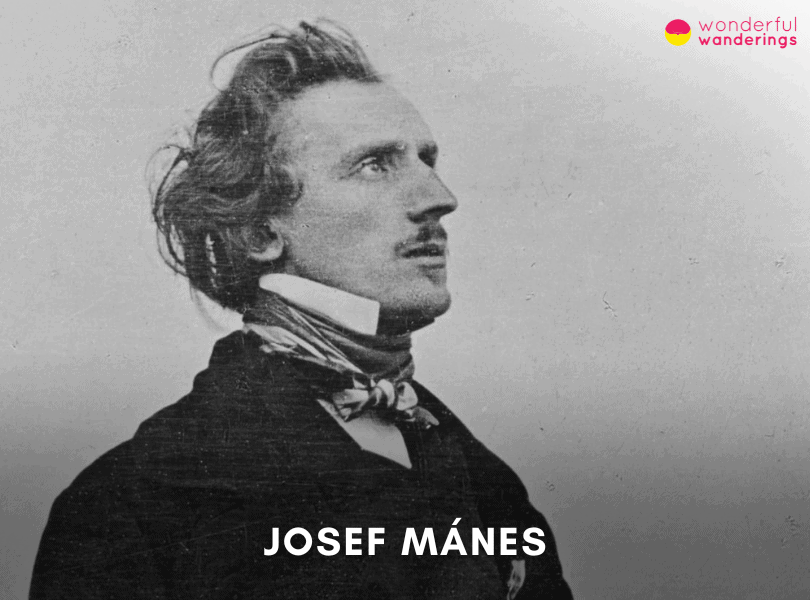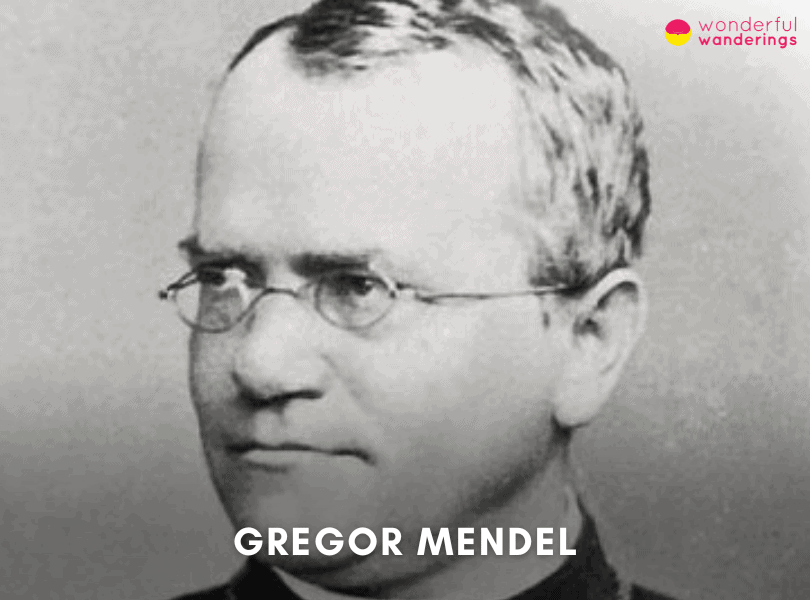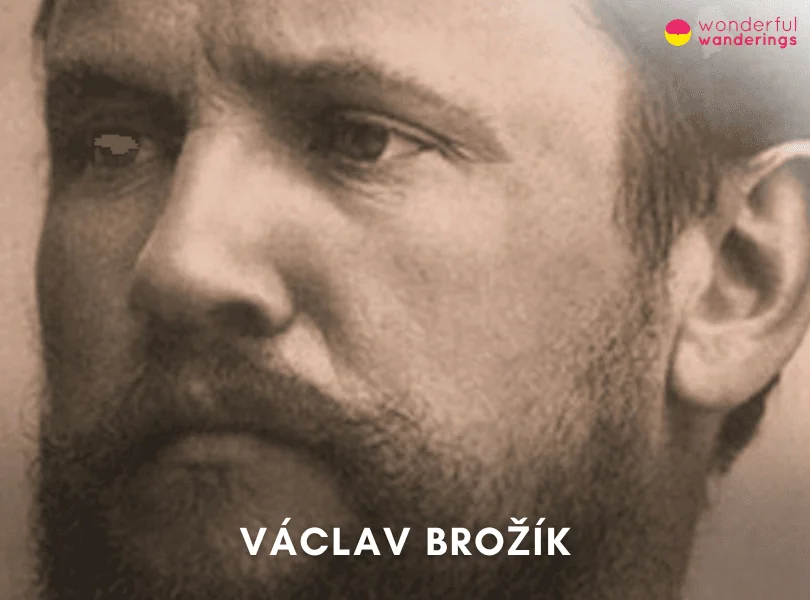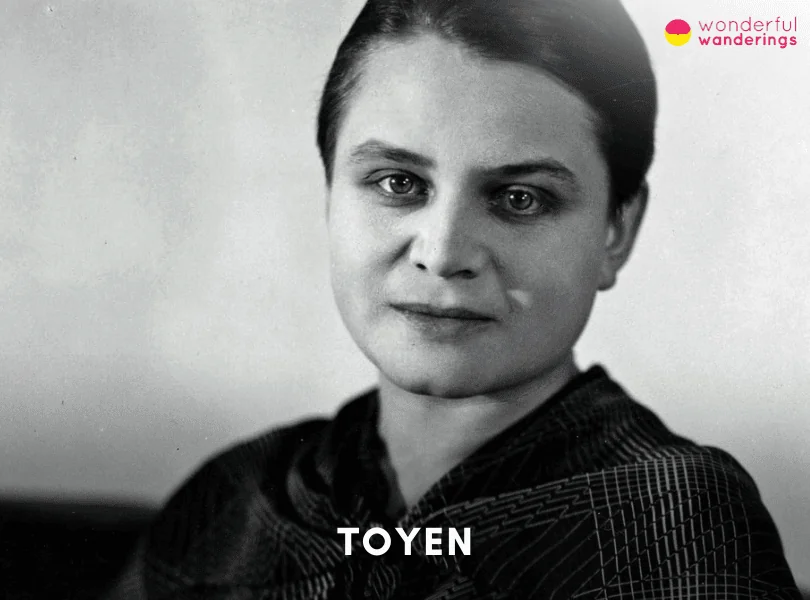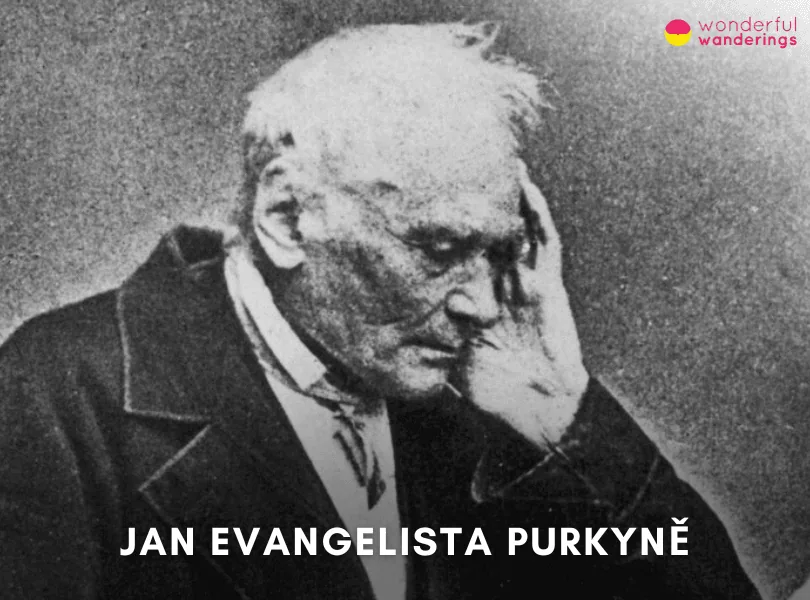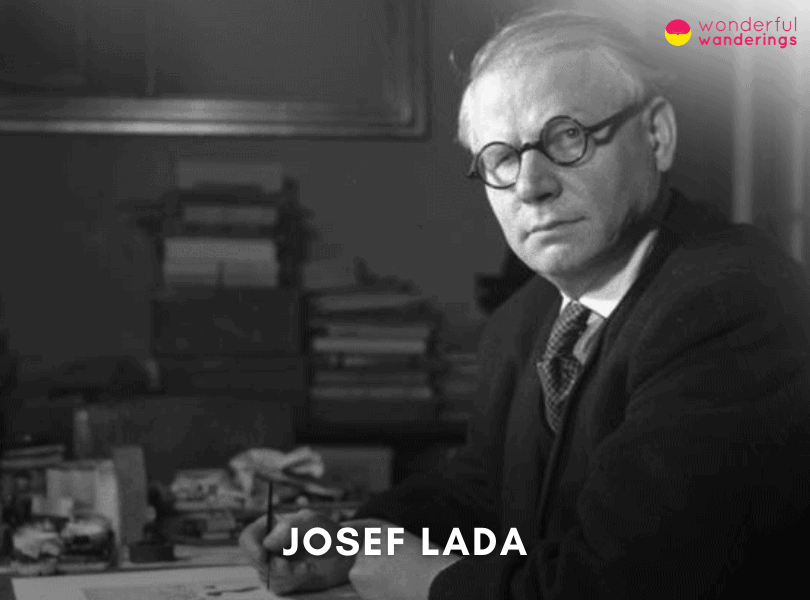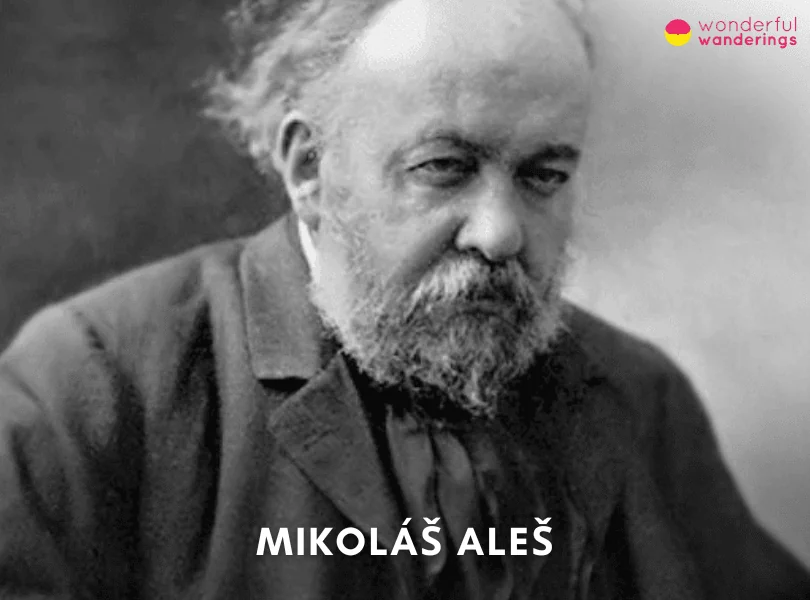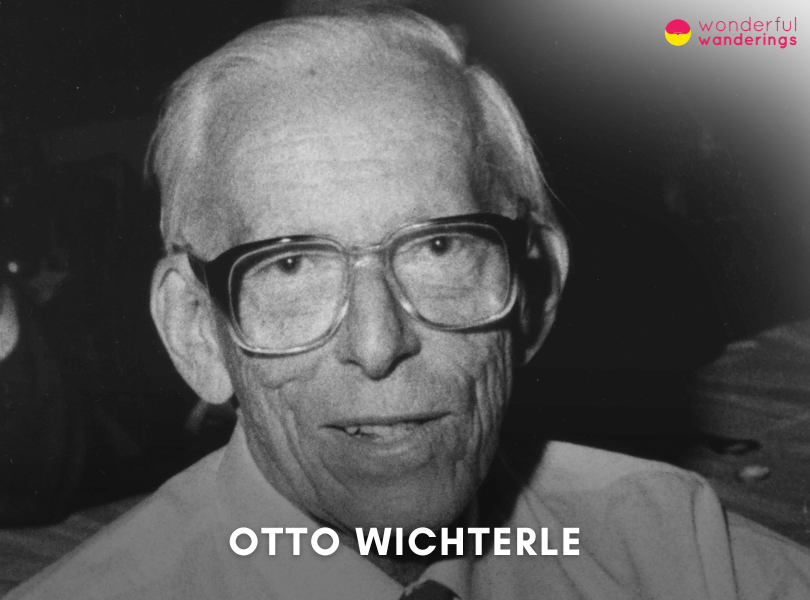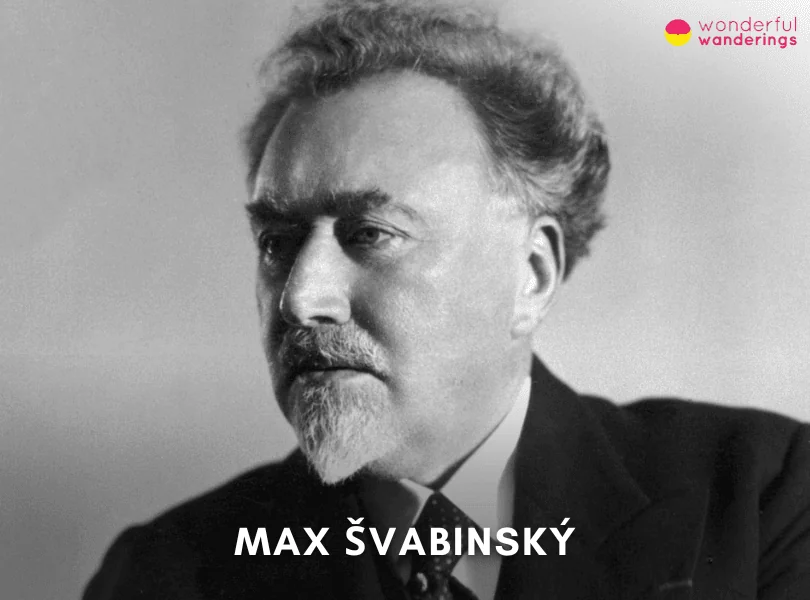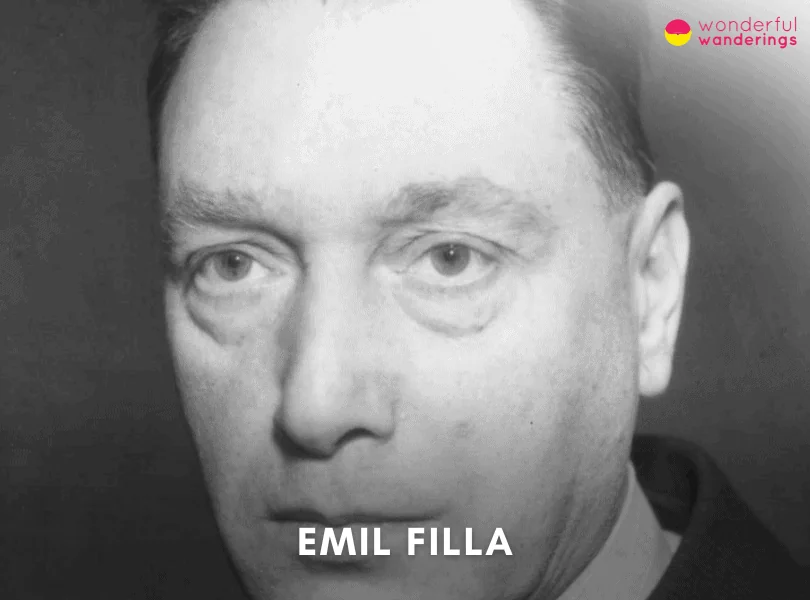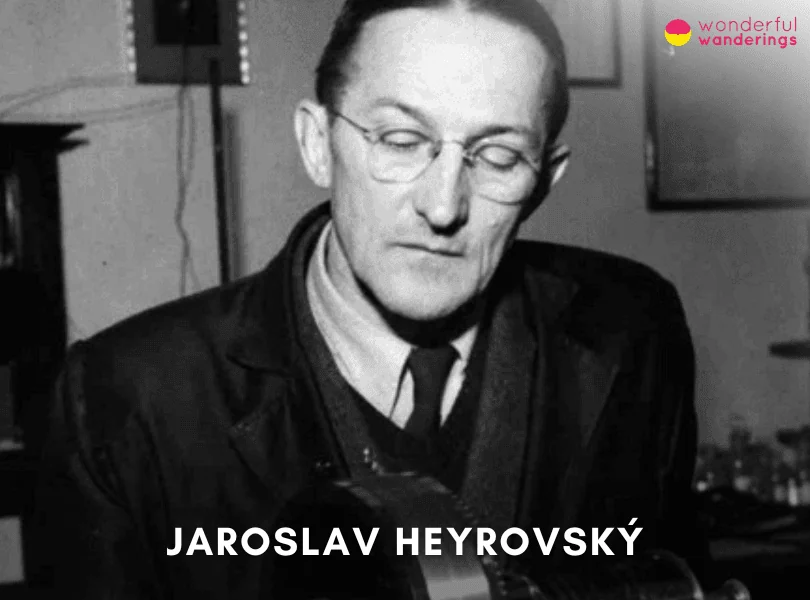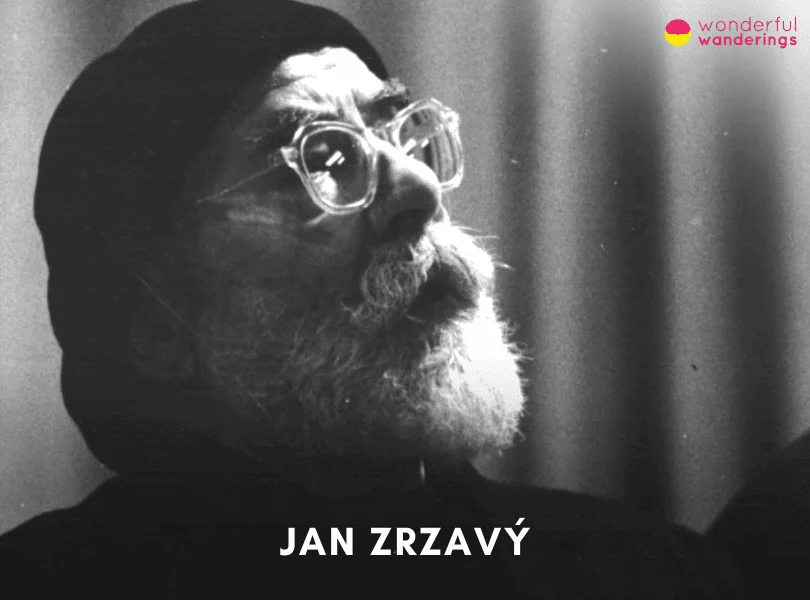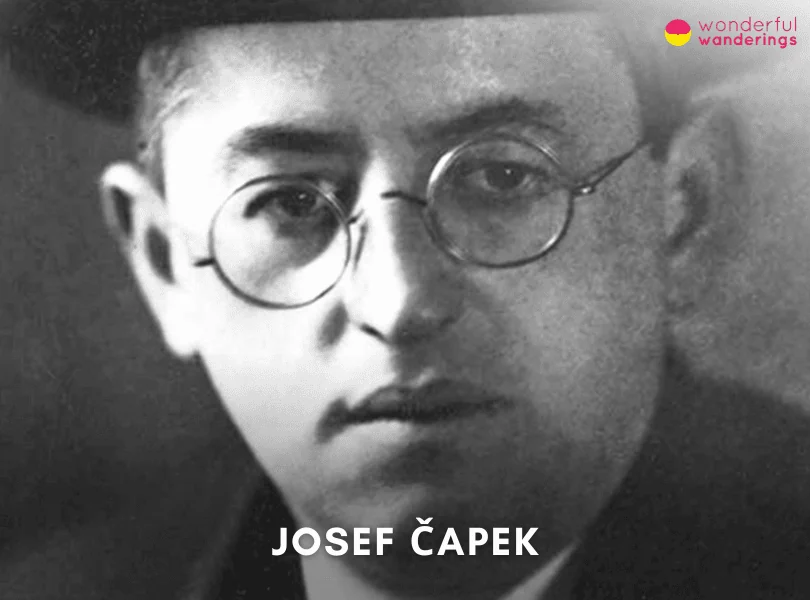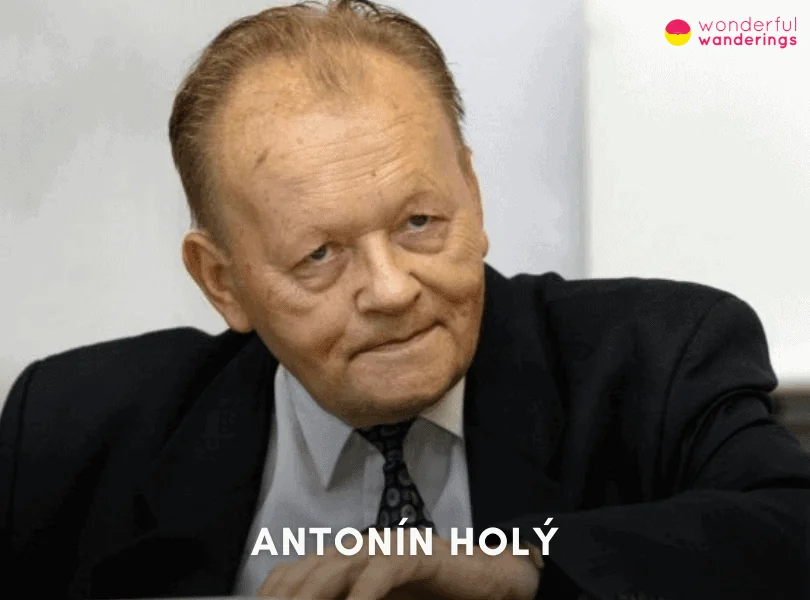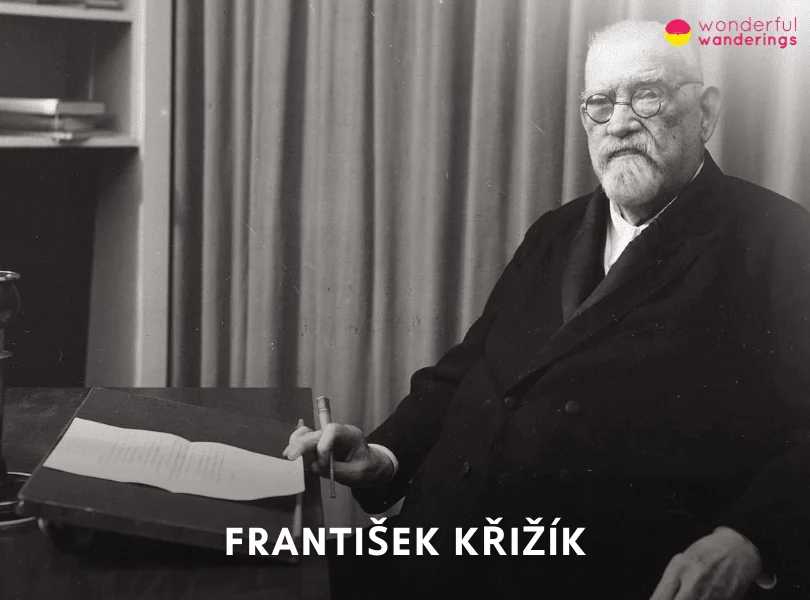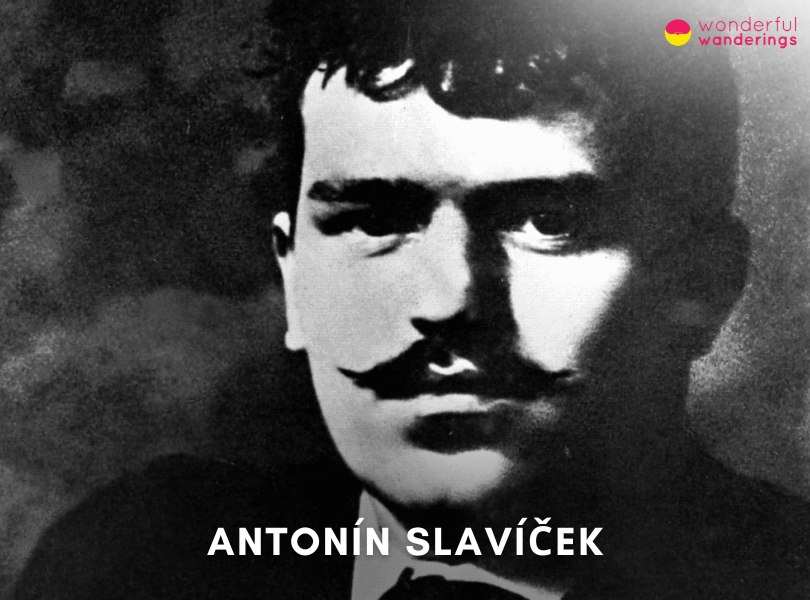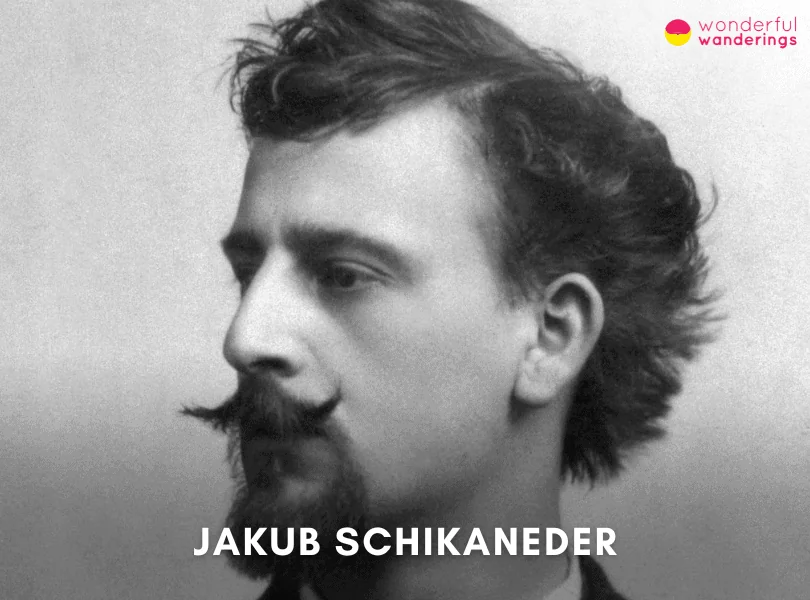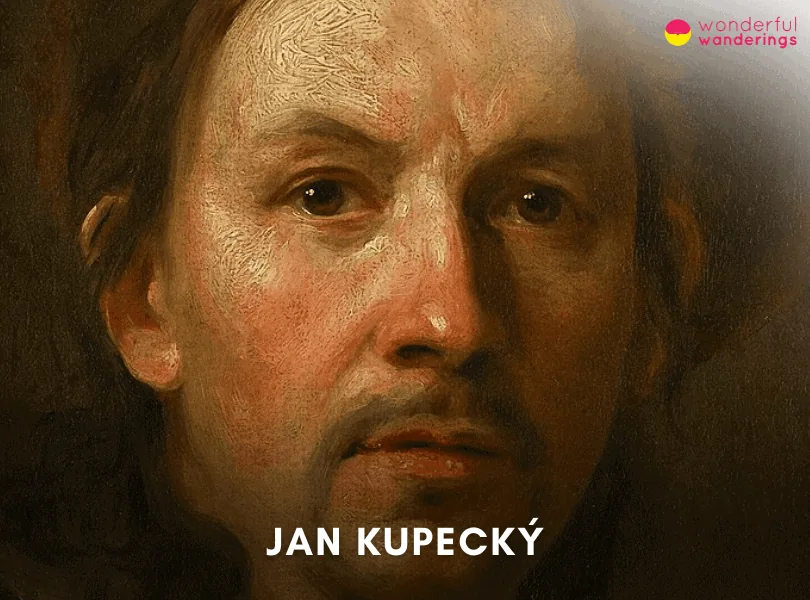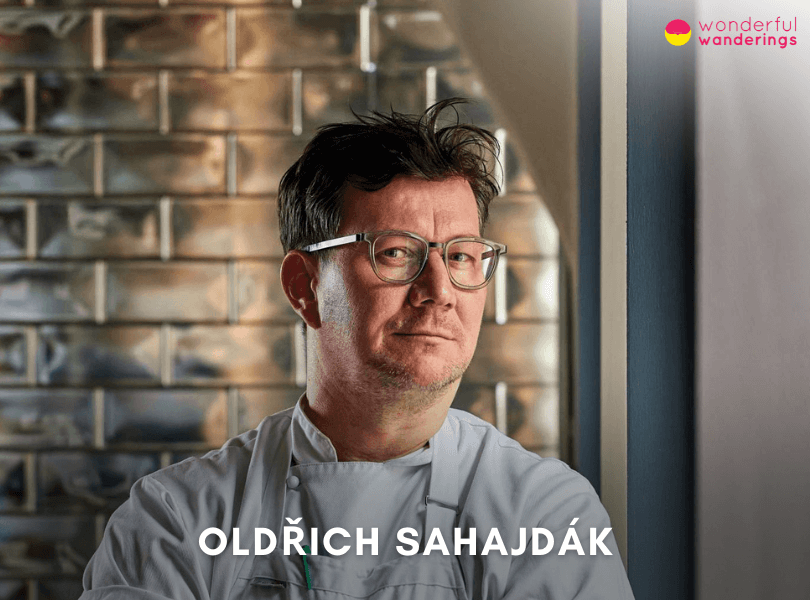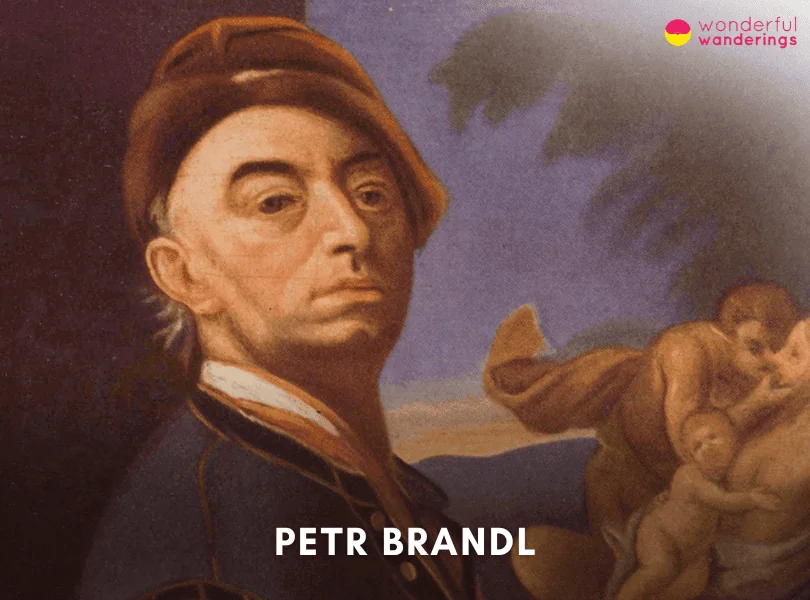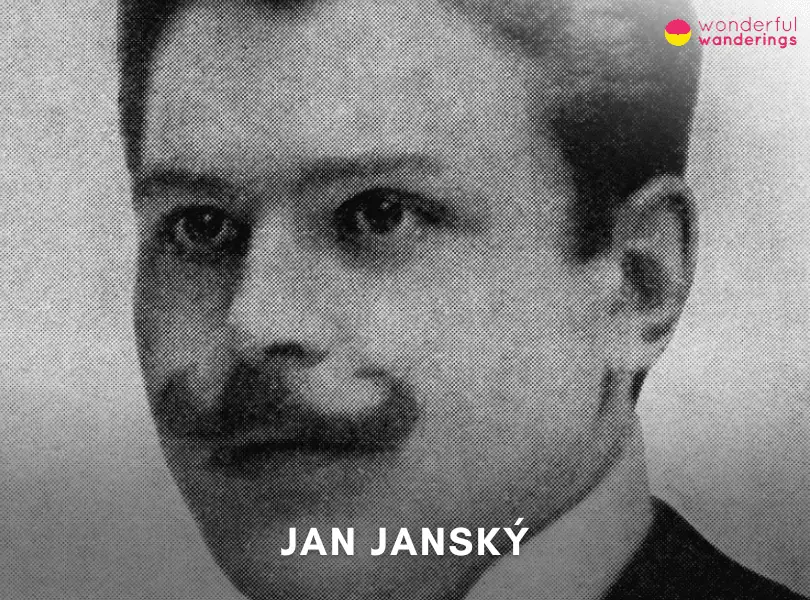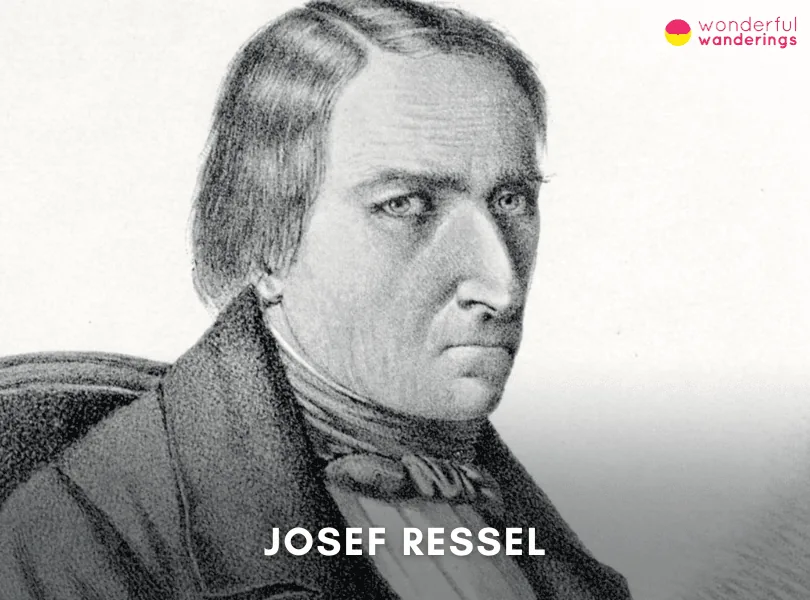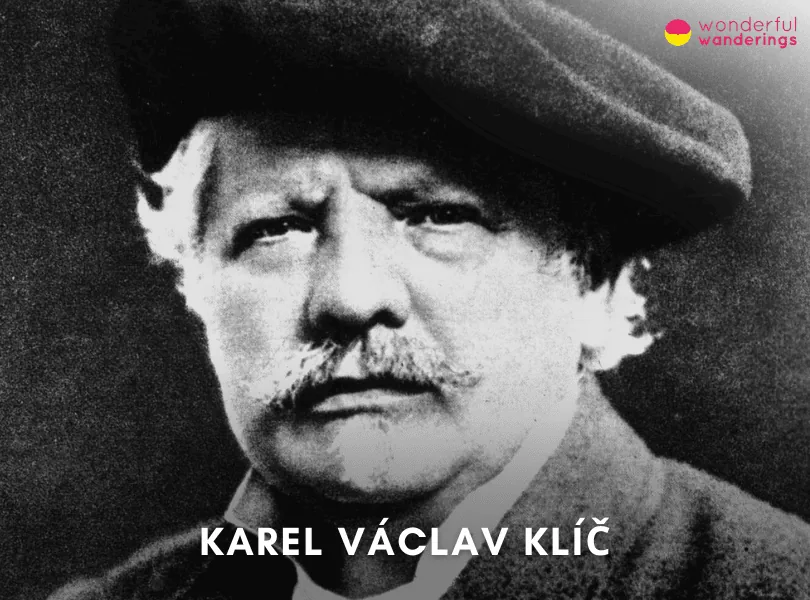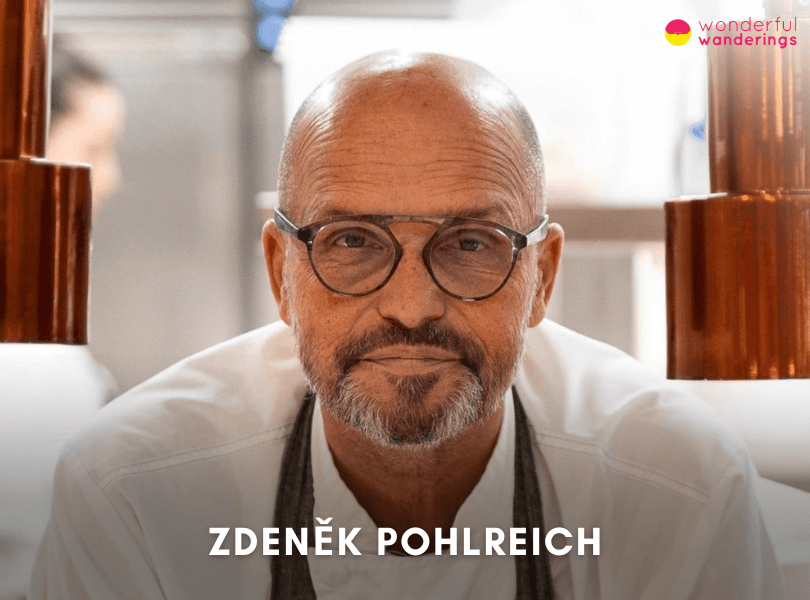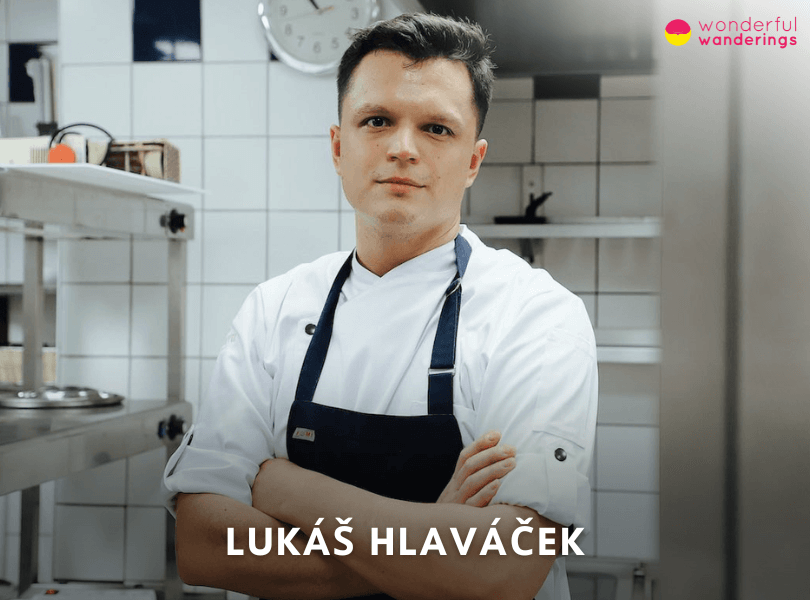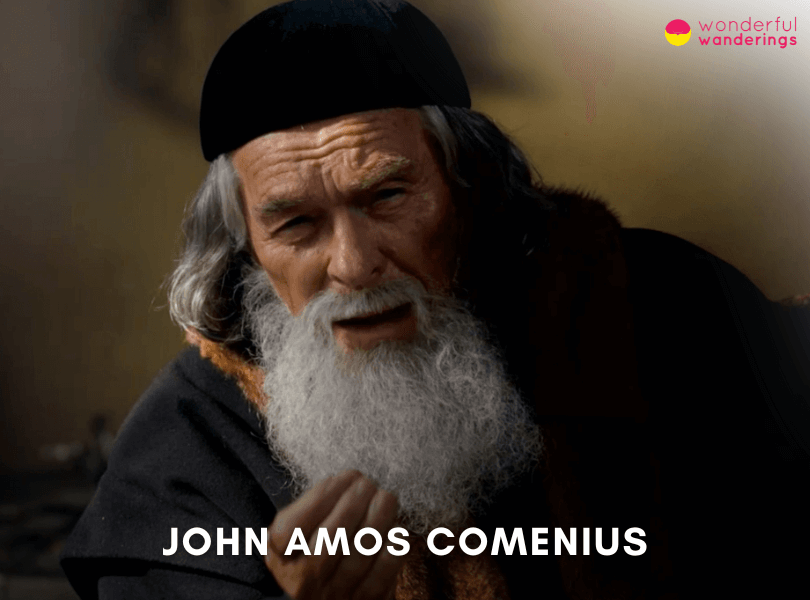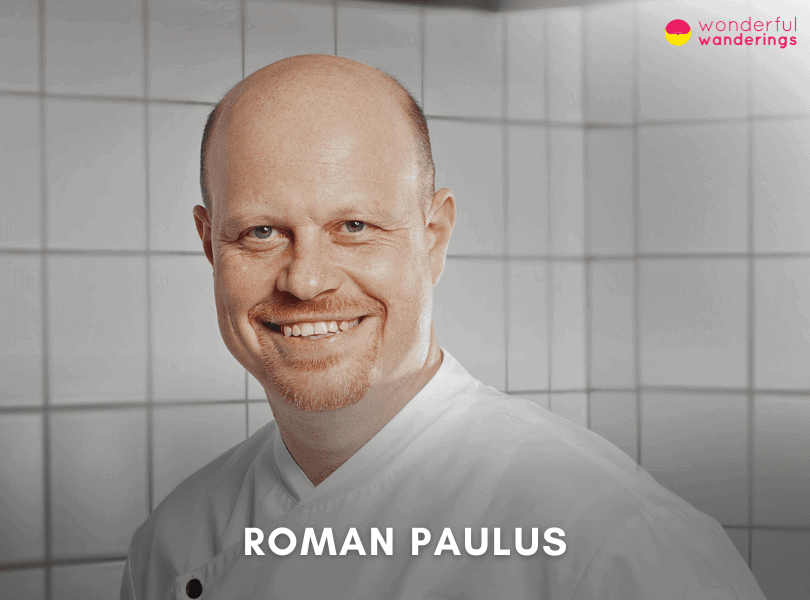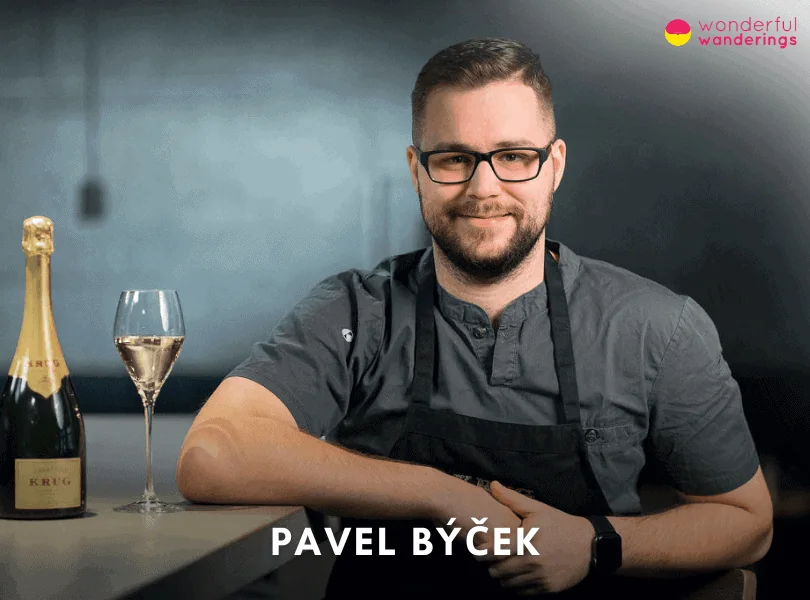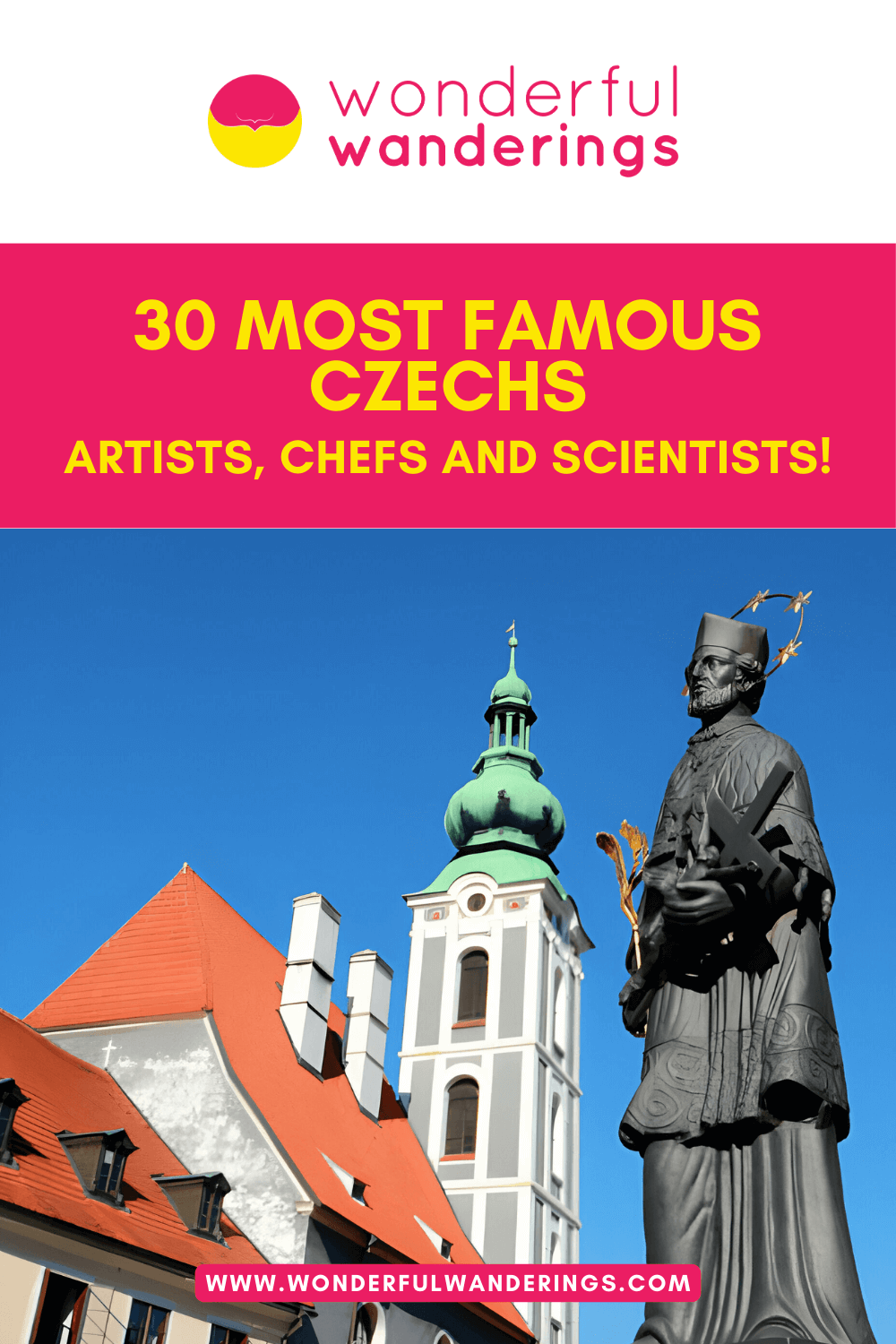Czechia has produced many influential figures across diverse fields. Alphonse Mucha pioneered Art Nouveau posters and paintings, while František Kupka created some of the earliest abstract works. Josef Mánes championed Czech art through poetic landscapes. Mikoláš Aleš promoted Czech culture through illustrations. In science, Jan Evangelista Purkyně founded Czech physiology and discovered key anatomical structures. Gregor Mendel established the foundations of genetics through his famous pea plant experiments. Otto Wichterle invented soft contact lenses. Antonín Holý developed groundbreaking antiviral drugs. Famous athletes include hockey great Jaromír Jágr, running legend Emil Zátopek who remarkably won three Olympic golds in 1952 and tennis star Petra Kvitová who holds the women’s fastest serve record. Acclaimed chefs like Pavel Býček, Roman Paulus and Lukáš Hlaváček lead Czech cuisine’s modern dining scene. From pioneering artists and scientists to world-class athletes and chefs, famous Czechs have made significant global contributions across diverse fields, constituting an important part of the country’s legacy.
Listed below are the most famous Czechs.
- Alphonse Mucha (1860-1939). Alphonse Mucha was a leading Czech Art Nouveau painter and graphic artist. He gained fame in 1890s Paris for his distinctive posters of actress Sarah Bernhardt in his signature ornate, elongated style. Mucha also created paintings, illustrations, jewelry and decorative panels featuring beautiful stylized women surrounded by natural motifs. His monumental Slav Epic paintings (1912-1926) depict the history and mythology of the Slavic peoples.
- František Kupka (1871-1957). František Kupka was a pioneering Czech abstract painter. Around 1910 he began incorporating abstract elements focused on color, motion and music into his work. His iconic abstract paintings like Amorpha and Disks of Newton were among the first completely non-representational works. Kupka made key contributions to the development of modern abstract art through his visual experiments with form, color and symbolism.
- Josef Mánes (1820-1871). Josef Mánes was the greatest Czech painter of the 19th century, famous for his poetic, realistic landscapes and genre scenes of Czech country life. His paintings helped champion the Czech national spirit during the revival movement. He captured nostalgic views of Czech rural traditions and culture in works like The Village Green and Cycles of the Year.
- Gregor Mendel (1822-1884). Gregor Mendel was an Augustinian monk and scientist considered the founder of modern genetics. His pioneering pea plant experiments revealed the fundamental laws of inheritance and dominant and recessive traits. Mendel’s groundbreaking work on patterns of heredity established the foundation of modern genetics.
- Václav Brožík (1851-1901). Václav Brožík was an acclaimed Czech academic realist painter known for his dramatic historical scenes. He gained fame for monumental paintings depicting major events in Czech history. Brožík’s intense attention to detail established his reputation as a leading European history painter in the 19th century. His masterpiece The Oath of Omladina portrayed a pivotal Czech national revival moment.
1. Alphonse Mucha
Alphonse Mucha (1860-1939) was a Czech painter, illustrator and graphic artist who was a leading figure in the Art Nouveau movement. He was born in 1860 in the small Moravian town of Ivančice and died in 1939 in Prague at the age of 78. Mucha first gained recognition in Paris in the 1890s for his distinctive theatrical posters of actress Sarah Bernhardt. These posters featured Mucha’s signature style of elongated, sinuous female figures surrounded by swirling, organic motifs inspired by nature. Mucha produced many other works in this style, including popular advertising posters, decorative panels, jewelry, furniture and book illustrations. His style came to define what is now known as French Art Nouveau.
Alphonse Mucha returned to his Czech homeland and began work on what he considered his life’s masterwork – a series of 20 monumental paintings known as The Slav Epic. Completed between 1912 and 1926, this series depicts the history and mythology of the Slavic peoples in a grand, symbolic style. Mucha donated The Slav Epic to Prague in 1928 and worked prolifically until his death. He created many other paintings, illustrations and designs celebrating Czech culture and history. Mucha is now considered an important pioneer and national icon for his role in defining Art Nouveau’s visual style and his artistic championing of Czech cultural identity. The Slav Epic remains his most ambitious and iconic achievement.
2. František Kupka
František Kupka (1871-1957) was a pioneering Czech abstract artist who made important contributions to the development of modern art. He was born in eastern Bohemia (now the Czech Republic) and later settled in Paris, where he lived most of his career. Kupka began incorporating abstract elements into his work around 1910, reflecting his ideas about motion, color and the relationship between music and painting. He developed an “Orphic art” style focused on color and form to express a spiritual inner reality. His iconic abstract works such as Amorpha. Fugue in Two Colors (1912) and Disks of Newton (1911-12) were among the first completely non-representational paintings. Kupka was connected to Cubism and helped organize the Section d’Or group in 1912.
František Kupka gained international renown for his abstract style. Key examples include his Vertical Planes series (1911-12), Warm Chromatics (1913-14) and his late masterwork Around a Point (1920-30), which synthesized his ideas about cosmic symbols, science and creation. Kupka was supported by friend and patron, Czernin, who amassed a large collection of his work. Kupka’s bold experiments with form, color and abstraction were instrumental in paving the way for pure abstract art in the 20th century. His work has regained acclaim for its pioneering vision, as seen in retrospectives at the Guggenheim Museum and Centre Pompidou. The originality of Kupka’s completely non-objective paintings remains an important legacy in abstract art.
3. Josef Mánes
Josef Mánes (1820-1871) was a famous Czech painter known for his realistic yet poetic landscapes and genre scenes of Czech country life. He was considered the greatest Czech painter of the 19th century and a leading figure of the Czech National Revival movement.
Mánes was born in Prague in 1820. He was largely self-taught and learned by studying old masters in Prague galleries. He traveled around Bohemia, Moravia and Slovakia, creating finely detailed sketches that captured the Czech countryside and rural folk. His early reputation was established with works like The Spring, A Funeral in Winter and A May Festival.
Josef Mánes emerged as a champion of the Czech national spirit through his paintings. Works like The Village Green, The Corpus Christi Procession and his Cycles of the Year capture nostalgic, idealized views of Czech rural traditions and culture. Despite struggles with mental illness, he produced a remarkable legacy of some 5000 drawings and watercolors before dying in Prague in 1871 at 51 years old. Mánes’ greatest accomplishment was his ability to capture the Czech landscape while promoting a nationalist revival poetically. He conveyed both the hardship and romanticism of Czech country life. The Josef Mánes Gallery in Prague contains many of his most iconic works. Mánes is revered as the artist who “painted the soul of the Czech nation”, capturing its land and identity for future generations.
4. Gregor Mendel
Gregor Mendel (1822-1884) was an Augustinian monk and scientist who is considered the founder of the science of genetics. He was born in 1822 in Heinzendorf, Austria (now Hynčice, Czech Republic) to a farming family. Mendel could attend school thanks to the support of his older sister. He eventually attended the Olmutz Philosophical Institute and later entered an Augustinian monastery in 1843 in Brno, Czech Republic, where he took the name Brother Gregor.
Gregor Mendel conducted plant hybridization experiments that revealed dominant and recessive traits and patterns of inheritance. He cultivated and carefully documented over 28,000 pea plants, tracking inheritable traits like plant height, seed shape, flower color and position. This allowed him to recognize and formulate the fundamental laws of heredity and dominant and recessive inheritance patterns, later known as Mendel’s Laws of Inheritance. Mendel’s pioneering experiments and mathematical analysis of genetic inheritance established the foundation for modern genetics. Mendel died in 1884 at 61 years old. His work went undiscovered for the next 34 years until 1900, when his research was simultaneously rediscovered by Carl Correns, Erich von Tschermak and Hugo de Vries, bringing Mendel recognition as the principal founder of genetics. His discoveries profoundly influenced 20th-century biology and our modern understanding of heredity.
5. Václav Brožík
Václav Brožík (1851-1901) was an acclaimed Czech painter known for his realistic and dramatic historical scenes. He was born in 1851 in Třemošná in Bohemia (now the Czech Republic). Brožík studied at the Academy of Fine Arts in Prague under Eduard von Engerth. He later continued his studies in Vienna and Munich, where he was influenced by the academic realism popular at the time. Brožík first gained fame for monumental paintings depicting major events in Czech history, including scenes from the Hussite Wars and the 1620 Battle of White Mountain. His intense attention to detail and drama established his reputation as one of Europe’s leading history painters in the 19th century. Major works include the dark and tension-filled painting Jan Hus at the Council of Constance (1883), portraying the Czech religious reformer on trial and his masterpiece, The Oath of Omladina (1893), capturing a pivotal moment in the Czech national revival.
Václav Brožík achieved international renown with paintings exhibited across Europe and received prestigious commissions. From 1894-1895 he worked in Paris on the epic canvas The Opening of the Estates General by Louis XVI, May 5, 1789. Despite struggles with mental illness in his later years, he continued working prolifically up until his premature death in 1901 at age 49. Václav Brožík played a key role in developing 19th-century Czech art and his power and technical mastery established a distinctly Czech school of academic realist painting.
6. Toyen
Toyen (1902-1980) was the pseudonym of Czech artist Marie Čermínová, a pioneering figure in the Surrealist movement. Born in Prague in 1902, Toyen adopted an androgynous identity, refusing feminine gender markers and dressing in masculine attire. This gender fluidity became a defining aspect of Toyen’s artistic identity. In the early 1920s, Toyen studied decorative arts in Prague, where they began a close collaboration with poet and artist Jindřich Štyrský. Together they developed Artificialism, an alternative to Surrealism concerned with poetic perception. Toyen joined the Czech avant-garde group Devětsil in 1923. In 1925 they moved to Paris with Štyrský, mingling with the Surrealists. Back in Prague, their work grew increasingly Surrealist in style, marked by dreamlike imagery and eroticism.
Toyen formally joined the Surrealist Group, working closely with its founder André Breton. Toyen’s painting and graphic art proved widely influential in the movement, known for mysterious landscapes and explorations of sexuality and desire. Toyen produced subversive works criticizing fascism before fleeing to Paris in 1947 as Communism overtook Czechoslovakia during WWII. Toyen continued creating paintings and collaborating until their death in 1980. Toyen made major contributions to Surrealism over five decades through a body of work that was transgressive, erotic and politically defiant, pushing gender boundaries and advocating for female authorship in a male-dominated movement. Toyen’s artistic independence and poetic visual language left an indelible mark. Their mysterious paintings of metamorphosis and illusion were a crucial achievement in European interwar and postwar avant-garde art.
7. Jan Evangelista Purkyně
Jan Evangelista Purkyně (1787-1869) was an influential Czech anatomist and physiologist who made significant contributions to many fields of science and medicine. He was born in Libochovice, Bohemia (now Czech Republic) in 1787 and died in Prague in 1869 at 81. Purkyně attended the University of Prague where he received his medical degree in 1819. He soon became one of the earliest and most prominent professors at Charles University in Prague, teaching physiology and anatomy from 1823 to 1850. Purkyně discovered the intricate network of fibers in the heart’s conduction system that coordinates the heartbeat, now known as Purkinje fibers. He also identified the first visualizations of cells in the cerebellum called Purkinje cells. His 1839 publication detailing observations using a candle microscope represented an early description of human tissue cells.
Jan Evangelista Purkyně was appointed Chair of Physiology at the University of Wroclaw in Prussian Silesia (now Poland), where he served until his retirement in 1869. There he continued making strides in areas like embryology, neuroscience, meteorology, aesthetics and philosophy. His prolific research and writings covered an exceptionally wide range of sciences. Purkyně is regarded as the founder of Czech physiology and influenced many students who helped spread his teachings. His discovery of key anatomical structures and cellular systems in the human body remains an enduring scientific legacy.
8. Josef Lada
Josef Lada (1887-1957) was an acclaimed Czech painter, writer and illustrator known for his humorous and nostalgic depictions of Czech village life. He was born in 1887 in the small town of Hrusice in central Bohemia. Lada showed artistic talent from a young age. He moved to Prague as a teenager to pursue his passion for drawing and painting, studying at the School of Applied Arts. Lada is beloved in the Czech Republic for his gently satirical illustrations and cartoons featuring quirky rural characters, which appeared widely in newspapers, magazines and books. His illustrated stories affectionately captured the charm and humor of Czech country life. Lada illustrated over 100 books in his lifetime, including those he wrote and works by famous authors such as Eduard Bass and Jaroslav Hašek. He is probably best known internationally as the original illustrator of Hašek’s classic satire The Good Soldier Švejk.
Josef Lada created a visual lexicon of Czech national identity. His recognizable style depicting folk traditions, village pubs, festivals and countryside landscapes symbolized a nostalgic, idealized vision of Czech rural life. Lada continued celebrating and gently parodying Czech rural culture until he died in 1957 at 70. Josef Lada holds an unrivaled place in Czech visual arts and literature as the artist who affectionately captured the Czech spirit and way of life.
9. Mikoláš Aleš
Mikoláš Aleš (1852-1913) was an influential Czech painter and illustrator known for his satirical cartoons and depictions of Czech history and folklore. He was born in 1852 in Mirošov, Bohemia (now part of the Czech Republic). Aleš showed artistic talent from a young age and went on to study at the Prague Academy of Fine Arts. Aleš is considered one of the most important Czech artists of the 19th century. He was a leading figure in the Czech National Revival movement, using his art to promote Czech culture and national identity. His cartoons and illustrations satirized Austrian rule over Bohemia with humor and imagination. Aleš also brought Czech history and legends to life. Some of his most iconic works include paintings depicting the Hussite military leader Jan Žižka and scenes from Czech fairy tales.
Mikoláš Aleš traveled across Bohemia, Moravia and Slovakia, documenting Czech rural life through sketches and watercolors. These studies of folk traditions and costumes would later inform his masterful History of the Czech Nation series of murals, painted from 1891-1893, which covers key events in Czech history. His artistic legacy also includes over 10,000 drawings and watercolors. Mikoláš Aleš played an integral role as an artist and patriot in the Czech National Revival. He brought Czech history to life for future generations while using art to challenge Austrian rule. The Aleš South Bohemian Gallery in Hluboká nad Vltavou contains many of his most significant works.
10. Otto Wichterle
Otto Wichterle (1913-1998) was an influential Czech chemist and inventor who pioneered the manufacturing of soft contact lenses. He was born in Prostějov, Czechoslovakia (now the Czech Republic) in 1913. Wichterle initially studied law and became fascinated by chemistry. He went on to earn a PhD in organic chemistry at the Prague Institute of Chemical Technology in 1936. Otto Wichterle invented the first successful soft hydrogel contact lenses in 1961. Dissatisfied with the comfort of existing lens options, he developed lenses using a revolutionary hydrogel material made from 2-hydroxyethyl methacrylate (HEMA) and ethylene dimethacrylate (EDMA). This innovation brought high levels of oxygen permeability and optical clarity. Wichterle licensed his invention, enabling the modern worldwide contact lens industry.
Otto Wichterle made key contributions to areas like pharmaceutical synthesis and chromatography. He authored over 300 scientific papers and held dozens of patents. He served as director of the Institute of Macromolecular Chemistry at the Czechoslovak Academy of Sciences in Prague. Wichterle received many honors for expanding the frontiers of polymer science and its practical applications. Otto Wichterle died in Prague in 1998 at 84, recognized globally as the father of soft contact lenses.
11. Max Švabinský
Max Švabinský (1873-1962) was an influential Czech painter and graphic artist known for his realistic and symbolic depictions of Czech landscapes, folk life and mythology. He was a leading figure of the Czech National Revival movement in the late 19th and early 20th centuries.
Švabinský was born in 1873 in Kroměříž, Moravia (now part of the Czech Republic). He studied at the Academy of Fine Arts in Prague, where he was influenced by Czech realists like Aleš and Mařák. Švabinský lived and worked primarily in Prague and traveled around the Czech countryside painting local people and rural life. Švabinský is best known for powerfully capturing the Czech landscape in works like his Cycles of the Year, expressing the beauty and hardship of agrarian life. Paintings like The Spring Ploughman became icons of Czech national identity. He brought Czech mythology and folklore to life through symbolic, metaphor-rich works like Živá voda (Living Water) and Koupání čertů (The Bathing of the Devils).
Max Švabinský taught at the Academy of Fine Arts in Prague, instructing generations of Czech artists. He illustrated over 50 books, including Czech fairy tales and stories that further promoted national culture. Švabinský was also an accomplished graphic artist and designed Czech postage stamps and banknotes. Max Švabinský played a seminal role as an artist and teacher in developing an independent Czech national style. He conveyed the harshness and romanticism of agrarian life while visualizing Czech identity. The Švabinský Gallery in Kroměříž contains many of his most iconic paintings.
12. Emil Filla
Emil Filla (1882-1953) was an influential Czech painter and sculptor who pioneered modern art in his country. He was born in Chropyně in 1882 and died in Prague in 1953 at 71. Filla became enamored with painting and in 1907 he moved to Paris where he immersed himself in the emerging styles of Fauvism, Cubism and Expressionism. Filla was a founding member of the avant-garde Group of Plastic Artists, promoting modern trends in Czech art. He developed a distinctive Cubist style, fracturing forms and depicting transparent and intersecting planes. Major paintings like The Family Life (1912) and Still Life with Playing Cards (1913) exemplify his early Cubo-Expressionism. His work grew more abstract and he experimented with Constructivism. In the 1920s he became involved with the Poetism movement led by poet Karel Teige which sought to fuse avant-garde art, poetry, film and theater.
Emil Filla created a series of paintings inspired by the Czech countryside that combined Cubist elements with Art Deco stylization. He also produced many landscapes around this time. After WWII, the new Communist regime denounced abstract art and Filla’s work was branded as “formalism”. Barred from painting, he focused only on ceramics and porcelain design until he died in 1953. Filla is now recognized as the most important pioneer of avant-garde painting in the Czech lands in the early 20th century, introducing major European modern art trends while developing his dynamic Cubist idiom that influenced a generation of Czech painters.
13. Jaroslav Heyrovský
Jaroslav Heyrovský (1890-1967) was an influential Czech chemist who pioneered the field of polarography and made major contributions to electroanalytical chemistry. He was born in Prague, Czechoslovakia (now Czech Republic) and died in Prague at age 76. Heyrovský is best known for inventing the polarographic method in 1922 while working as a researcher at Charles University in Prague. Polarography is an electrochemical technique used to analyze chemicals in solutions by measuring the current in an electrolytic cell as droplets of mercury fall from an electrode. This method allowed for rapid qualitative and quantitative analysis of substances. Heyrovský built the first polarograph in 1924 to automate the process. The commercialization of this device and the polarographic method revolutionized electrochemistry.
Jaroslav Heyrovský published over 500 papers elaborating the theory and applications of polarography across chemistry, biochemistry, metallurgy and industry. He trained generations of polarographers and founded the Polarographic Institute of the Czechoslovak Academy of Sciences in 1950. Heyrovský was awarded the Nobel Prize in Chemistry for discovering and developing polarographic analysis methods. Heyrovský advanced electrochemistry and electroanalytical techniques. His development of rapid and automated tools for chemical analysis has had an enduring impact across chemistry and related sciences. Heyrovský helped establish Czech science within the international landscape and brought great prestige to his country.
14. Jan Zrzavý
Jan Zrzavý (1890-1977) was an influential Czech painter, graphic artist and stage designer who was a leading figure in Czech modernist art in the early 20th century. He was born in Okrouhlice, Bohemia (now the Czech Republic) in 1890 and died in Prague in 1977. Zrzavý studied law at Charles University in Prague and left to pursue art, studying in Munich and Paris where he was exposed to Post-Impressionism, Symbolism and Art Nouveau styles. Zrzavý was a prominent member of the artistic group Sursum, creating paintings and prints that pioneered modern trends in Czech art. Works like The Spring, The Angel of Death and Ahasuerus established his poetic visual language combining Symbolism with Czech folklore influences.
Jan Zrzavý traveled to Italy, Greece, North Africa and the Middle East, incorporating exotic motifs into his myth-inspired compositions. During this time he also began designing stage sets and costumes for avant-garde theater productions by the Liberated Theater. Zrzavý created a body of work including paintings, illustrations, tapestries, mosaics and stained glass windows. Zrzavý created a highly original oeuvre. He led a revival of monumental religious mural painting in the 1930s and 1940s, exemplified by his apocalyptic Mankind at the Crossroads (1943-44) at the New City Hall in Prague. His imaginative visions and ornamental embellishments left a unique mark on Czech modernism.
15. Josef Čapek
Josef Čapek (1887-1945) was an influential Czech painter, writer and poet who pioneered modern art in Czechoslovakia. He was born in 1887 in the town of Hronov, Bohemia (now the Czech Republic) and died at the Bergen-Belsen concentration camp in 1945 at age 58. Josef was a leading figure in the Czech avant-garde scene in the early 20th century. He co-founded several modern art groups including the Czech Cubist collective Group of Plastic Artists and the Surrealist group in Prague. Čapek developed a distinctive Cubo-Expressionist style, contributed notable art criticism and helped promote modern art trends through his essays.
Josef Čapek coined the term “robot” in a discussion with his brother. The word was later popularized in Karel’s seminal science fiction play R.U.R. As the Nazis occupied Czechoslovakia. The two brothers were outspoken critics of fascism through their writing and art. Josef was arrested by the Gestapo in 1939 and died at Bergen-Belsen in 1945, a few months before the end of WWII. Josef Čapek produced paintings and writings over his 30-year career. He helped foment a radical modern art movement in Czechoslovakia promoting avant-garde styles like Cubism, Expressionism and Surrealism. Čapek courageously fought totalitarianism with his progressive art and ideas. His artistic legacy lived on as an inspiration for future Czech generations.
16. Antonín Holý
Antonín Holý (1936-2012) was an influential Czech scientist and chemist who made groundbreaking contributions to the development of antiviral and anticancer drugs. He was born in 1936 in Prague, Czechoslovakia (now Czech Republic), where he lived for most of his life until his death from cancer in 2012 at age 75. Holý earned his PhD in organic chemistry from Prague’s Institute of Organic Chemistry and Biochemistry of the Czechoslovak Academy of Sciences in 1964. He then joined the institute as a researcher, specializing in nucleoside analogs. His work focused on modifying the structure of nucleic acids to create new compounds with antiviral and anticancer properties. Holý synthesized a series of modified nucleosides later known as Holý’s Base Analogues.
Antonín Holý’s biggest accomplishment was the development of several important antiviral drugs used today in treating HIV, hepatitis B, herpes and other viral infections. He created an antiviral compound called acyclovir, later marketed as a highly effective herpes treatment. Tenofovir has transformed HIV from a death sentence into a manageable chronic condition for millions worldwide. Antonín Holý made revolutionary contributions to medicinal chemistry and drug discovery. His ingenious antiviral compounds have saved countless lives across the globe, cementing his legacy as one of the most impactful chemists of the 20th century.
17. František Křižík
František Křižík (1847-1941) was a prolific Czech inventor and electrical engineer who made pioneering contributions to the development of electric lighting and power systems. He was born in 1847 in the village of Plánice in western Bohemia (now part of the Czech Republic). After studying engineering in Prague and working in Paris and London, Křižík returned to Prague in the 1870s, living his long life until his death at age 94. Křižík earned renown as one of the first experts on electric lighting in Austria-Hungary. In 1881, he oversaw the installation of electric street lighting in Prague, one of the earliest cities to adopt this innovation. He continued introducing electric tram and railway systems across Bohemia using his patented devices. His most famous accomplishment was the design and construction of the Křižík’s Fountain at Prague’s Výstaviště exhibition grounds, featuring an elaborate light show with 3D effects considered groundbreaking in its time.
František Křižík registered over 100 patents and pioneered many electro-technical inventions like arc lamp regulators, transformers and novel types of dynamo construction. He published extensively to promote the adoption of electric power and lighting in industry and transportation. Křižík sold most of his patents and companies by 1910. His ingenious inventions and tireless advocacy played a seminal role in bringing electricity and infrastructure to Czech cities. The Křižík Fountain still operates today as a testament to his visionary work at the dawn of the electrical age.
18. Antonín Slavíček
Antonín Slavíček (1870-1910) was a famous Czech painter and leading figure in the Czech modern art movement in the early 20th century. He was born in 1870 in Prague, where he lived for most of his life until his premature death from tuberculosis in 1910 at age 40. Slavíček demonstrated artistic talent from a young age. He first trained at the Prague Academy of Fine Arts, then continued his studies in Paris and Munich where he was exposed to new modern styles like Impressionism and Art Nouveau. He became part of an avant-garde group of artists centered around the Mánes Union of Fine Arts. Slavíček is best known for his landscape and genre paintings conveying a distinctly Czech poetic lyricism through soft brushwork and evocative light effects. Works like Summer, Blue Spring and Overcast Summer Day capture the Czech countryside in an intimate, meditative mood. His unique style combines Impressionist light with Art Nouveau compositional rhythms and decorative elements.
Antonín Slavíček produced over 1000 paintings, pastels and drawings before his early death. With his sensitive, innovative depictions of the Czech landscape, Slavíček pioneered a modern Czech painting style that influenced the next generation. He is regarded as one of the most important forerunners of early Czech modernism, capturing the spirit of the land through a distinctive poetic lens. Major collections of his works are housed in the National Gallery in Prague and the Slavíček Memorial in Kameničky, Czech Republic.
19. Jakub Schikaneder
Jakub Schikaneder (1855-1924) was an influential Czech painter known for his realistic depictions of everyday life and scenes of Prague city life. He was born in 1855 in Prague, where he lived and worked for most of his life. Schikaneder demonstrated artistic talent from a young age and entered the Prague Academy of Fine Arts, studying under prominent Czech painter Antonín Lhota. Schikaneder is considered a leading figure in Czech realist painting in the late 19th century. He captured Prague’s bustling urban landscapes, cafés and residents through keen observations of light and detail. Works like The Funeral, A Street in Prague and Cafe Interior convey the mood and vitality of the city. He also painted emotionally evocative genre scenes depicting the daily lives of ordinary Czechs. His sympathetic portrayals of poverty in paintings like The Seamstress and At the Ophthalmologists captured the hardship of working-class lives.
Jakub Schikaneder traveled to Paris where he embraced Impressionism, incorporating its loose brushwork and focus on the effects of light into his signature style of Czech realism. This blend of approaches culminated in his masterpiece, the iconic A Walk in the Park from 1896, capturing a sunny stroll on lush green Kampa Island. Schikaneder produced over 1000 paintings and drawings over his prolific career. Jakub Schikaneder played a seminal role in shaping Czech realist painting. His depictions of Prague remain among the most beloved celebrations of the city in Czech art.
20. Jan Kupecký
Jan Kupecký (1667-1740) was an influential Czech Baroque painter known for his portraits and religious works. He was born in 1667 in Bohemia (now the Czech Republic). He studied under leading painters before establishing his successful portrait painting studio in Prague and Vienna. Kupecký was one of the most sought-after portraitists of the Czech and Austrian aristocracy in the early 18th century. He created vivid, psychologically insightful likenesses of his elite clients that captured their status, wealth and personalities. Major portraits include the 1730 state portrait of Holy Roman Emperor Charles VI in full majestic regalia. Kupecký’s dramatic use of color, light and motion was unconventional yet appealed to aristocratic tastes.
Jan Kupecký created altarpieces and other religious paintings for churches and monasteries in Prague, Vienna and northern Italy where he worked from 1723 and 1732. His most famous accomplishment is his 1729 Assumption of the Virgin altarpiece for St. Nicholas Church in Prague. This virtuosic piece features a diagonal composition, an illusionistic ceiling and over 20 individualized figure portraits, showcasing Kupecký’s technical mastery. It is considered one of the most significant Czech altar paintings of its time. Jan Kupecký played a seminal role as his generation’s most famous Czech painter. He successfully navigated the elite art world of European courts while making iconic contributions to Czech Baroque painting.
21. Oldřich Sahajdák
Oldřich Sahajdák (1975) is an acclaimed chef and co-owner of La Degustation Bohême Bourgeoise, a Michelin-starred restaurant in Prague, Czech Republic. He was born in the Czech Republic and has spent his career there honing his innovative take on traditional Central European cuisine. Sahajdák’s cooking philosophy centers around high-quality, seasonal local ingredients which he uses to put a modern twist on classic Czech and regional dishes. He sources directly from local farmers, fishermen and hunters with whom he has built long-standing relationships over the past decade. His signature dishes like beef tartare with truffles and dark beer honey foam highlight his ability to blend rich, hearty flavors with delicate textures and presentations.
Winning a Michelin star in 2013 is Oldřich Sahajdák’s biggest accomplishment. It validated his slow, steady and uncompromising approach to building his restaurant and cuisine on his terms. Sahajdák has helped lead a resurgence of Czech gastronomy, combining global inspiration from famous restaurants like The French Laundry with regional techniques and ingredients. His success has made La Degustation Bohême Bourgeoise an internationally famous destination for progressive Central European fare. Sahajdák is widely considered one of the Czech Republic’s top chefs. His accolades, rare Michelin stars and longevity in one of Prague’s most competitive dining scenes cement his status as a master of modern interpretations of Bohemian and regional classics.
22. Petr Brandl
Petr Brandl (1668-1735) was one of Bohemia’s (now the Czech Republic) most prominent Baroque painters. He was born in Prague in 1668 and worked in Germany and Austria for some years. Brandl became the leading painter of his era in Prague thanks to his immense talent and drive. Brandl is acclaimed for his grand altarpieces, frescoes and insightful portraiture. He worked in a dramatic Baroque style characterized by strong lighting effects, rich colors and illusionistic compositions. Brandl forged his emotive visual language. His many religious commissions decorate churches across Prague and Central Europe. Some of his most famous altarpieces are the grandiose Assumption of the Virgin in the St. Vitus Cathedral and the dynamic Holy Trinity in the Church of St. Nicholas.
Petr Brandl’s prolific career peaked when he was appointed official court painter for Holy Roman Emperor Charles VI in Vienna from 1723 to 1724. This imperial patronage gave him greater prestige and visibility. One of Brandl’s most famous works from this Vienna period is his 1724 portrait of Charles VI in hunting attire. Brandl created a penetrating depiction of power and personality that cemented his reputation. Petr Brandl dominated Baroque painting as the most sought-after artist of his generation in Bohemia. The depth of character he conveyed through paint makes him one of the most memorable Czech painters of the 18th century.
23. Jan Janský
Jan Janský (1873-1921) was a Czech serologist, neurologist and psychiatrist who pioneered blood type discoveries. He was born in 1873 in the village of Skuteč in eastern Bohemia, Austria-Hungary and died in 1921 at 48 years old due to heart problems, (now the Czech Republic). Janský was a gifted student and earned a scholarship to attend Charles University in Prague, where he studied medicine. Janský is best known for classifying human blood into four types (A, B, AB and O) based on the presence of antigens and antibodies. His findings, published in 1907 and 1910, laid the foundation for the medical field of blood transfusion and blood type compatibility. Before his discoveries, unsafe blood transfusions often led to clotting or immunological reactions.
Jan Janský was a dedicated psychiatrist who advocated more humane approaches in mental institutions. He served as an assistant doctor at mental hospitals in Prague and Kosmonosy, where he introduced pioneering occupational therapy to engage patients. Janský also wrote scholarly articles on dementia and epilepsy. Jan Janský’s classification system for human blood endures as one of the most important medical discoveries of the 20th century. His findings enabled safe blood transfusions that have saved countless lives.
24. Josef Ressel
Josef Ressel (1793-1857) was an influential Czech forestry engineer and inventor who revolutionized ship propulsion through his pioneering design for the screw propeller. He was born in 1793 in Chrudim, Bohemia (now the Czech Republic). Ressel demonstrated great intelligence and an aptitude for mechanics from a young age. He attended a forestry institute in Prague before being appointed as an assistant forester in 1817, working in the Bohemian and Austrian forests. Ressel recognized inefficiencies in traditional paddlewheel ships. He envisioned a new propeller design that could effectively navigate shallow inland waterways and oceans. He patented his ingenious screw propeller system in 1827. His design arranged angled propeller blades in a spiral around a drive shaft to generate greater propulsion force. Despite initial skepticism, Ressel’s screw propeller became one of the most influential innovations in modern marine transport.
Josef Ressel focused largely on forestry engineering over his career, his brilliant propeller design revolutionized nautical transport. Over 300 ships worldwide have been outfitted with versions of his system. Decades after his death from typhoid in 1857, Ressel’s propeller had become the universal standard in marine propulsion. The efficiency and versatility of his design enabled the transition from sail to steam-powered vessels. Nearly every motorized ship in the world relies on some adaptation of Ressel’s essential concept, cementing his legacy as the father of the modern screw propeller.
25. Karel Václav Klíč
Karel Václav Klíč (1841-1926) was a pioneering Czech artist and engraver who made significant contributions to the development of photoengraving and gravure printing. He was born in Hostinné, Czechoslovakia and spent most of his career in Prague and Vienna.
Klíč is considered the recognized inventor of modern gravure printing. He combined existing intaglio printing techniques like crossline screens and gelatin transfers to metal plates, establishing the foundation for high-quality image reproduction that became gravure printing. This allowed for the mass production of illustrations and images in books, magazines and newspapers. Klíč’s biggest accomplishment was patenting the photogravure process in 1878. This gave his firm a lucrative monopoly on gravure printing until competitors emerged. He later perfected three-color gravure printing as well. Klíč worked as a painter, draughtsman and illustrator for publications in Prague, Brno and Budapest early in his career.
26. Zdeněk Pohlreich
Zdeněk Pohlreich (1961) is an influential Czech chef, restaurateur and media personality known for his sharp criticism and high standards regarding Czech cuisine. He was born in 1961 in Prague, Czechoslovakia (now Czech Republic), where he has resided most of his life. Pohlreich found his true passion in cooking. He trained at hotels in Germany, Austria, Switzerland and France, working under acclaimed chefs. In 1996 he opened his first major restaurant, Divinis, bringing fine dining to Prague. Pohlreich went on to open several other successful restaurants over the years that set high benchmarks for Czech gastronomy.
Zdeněk Pohlreich is arguably most famous as a blunt, tell-it-like-it-is TV personality judging various culinary competition shows popular in the Czech Republic like MasterChef, Hell’s Kitchen and Ano, šéfe! (Yes, Chef!). His sharp-tongued criticism of underperforming cooks and restaurants quickly made him a household name. Pohlreich’s high expectations come from wanting to improve Czech culinary standards. Pohlreich has left an indelible mark in pushing Czech cuisine to greater heights and educating the public on food quality. His name has become synonymous with good cooking in the Czech Republic. Pohlreich’s dedication to excellent gastronomy, whether through his restaurants or TV critiques, has helped shape today’s thriving Czech food scene.
27. Lukáš Hlaváček
Lukáš Hlaváček (1993) is the executive chef at Terasa U Zlaté Studně restaurant in Prague, Czech Republic. He rose to prominence in the Czech food scene in late 2020 when he was appointed head chef at the famous Hotel Alcron Prague at 27. Hlaváček is considered one of the Czech Republic’s most promising young chefs due to his modern, seasonal cuisine and extensive Michelin-starred restaurant experience abroad. He honed his skills over 6 years working under famous chefs at Michelin-starred establishments in London and California after getting his start in Prague under acclaimed chef Roman Paulus. Winning the head chef position at Terasa U Zlaté Studně in 2023 is Hlaváček’s biggest accomplishment. The restaurant is an iconic Prague fine dining destination and he aims to establish his progressive Czech cuisine style there. His mission is to showcase local ingredients in a refined yet approachable way, blending classic French techniques with contemporary flair. Hlaváček represents the vanguard of Czech gastronomy’s new generation. Many believe international acclaim and Michelin stars could be within reach for this talented rising star.
28. John Amos Comenius
John Amos Comenius (1592-1670) was an influential Czech philosopher, teacher and writer who pioneered modern educational methods. He was born Jan Amos Komenský in 1592 in Uherský Brod in Moravia, in the modern-day Czech Republic. Comenius was orphaned at age 12 and raised by guardians. He studied at schools in Strážnice and Přerov before attending university in Herborn and Heidelberg. For his innovative pedagogical concepts, Comenius is considered a founding father of modern education. His experience teaching in Moravian schools led him to publish two works in 1628 outlining new methods like using illustrations in textbooks.
Comenius fled Moravia in 1628 when Protestants were banned from openly practicing religion. He spent over a decade in exile in Leszno, Poland. He wrote his seminal work The Great Didactic which promoted universal education and new approaches like matching instruction to developmental levels. Comenius pioneered revolutionary educational ideas like universal public schooling, sensory learning and instruction in students’ native languages. His principles shaped modern pedagogy. Comenius also produced over 150 published works on philosophy, science and theology and most of his existing works focus on his contributions to teaching methods. As the father of modern education, his writings on school reform spread his fame across Europe as an innovative educational philosopher and practitioner.
29. Roman Paulus
Roman Paulus (1975) is an award-winning chef born in Czechia who spearheaded a resurgence of modern Czech cuisine. He led the kitchen at Prague’s Hotel Alcron, where he earned Prague’s first-ever Michelin star in 2012. This accomplishment catalyzed international recognition of Czech gastronomy’s potential. Paulus cemented his status as one of the Czech Republic’s most talented chefs by retaining the Michelin star for six consecutive years. His innovative interpretations of classic Czech flavors combined local ingredients, French techniques and global inspiration. He authored two cookbooks disseminating his refined yet approachable style to wider audiences. Roman Paulus contributed to advancing the Czech culinary arts through his teaching courses and media appearances. He demonstrated that Czech chefs could achieve global acclaim by balancing tradition with creative vision. Paulus’ pioneering role in earning Prague’s first Michelin star and spearheading the modern Czech dining scene solidifies his legacy.
30. Pavel Býček
Pavel Býček (1975) is an award-winning Czech chef known for his role in earning Prague its first-ever Michelin star at the famous Alcron restaurant. He was born in Rožnov pod Radhoštěm, Czech Republic. Býček gained formative experience working under famous chefs at Michelin-starred restaurants in London. He then returned to Prague to work under chef Roman Paulus at Alcron. Býček led the kitchen team in retaining Alcron’s Michelin star for five consecutive years. This was a monumental accomplishment for Czech gastronomy.
Pavel Býček became an entrepreneur by co-founding The Eatery Bistro in Prague with restaurateur David Pátek in 2018. The Eatery quickly earned acclaim for Býček’s style of modern Czech cuisine blended with global inspiration. His dishes showcase local, seasonal ingredients prepared with traditional and contemporary techniques. The Eatery earned special recognition as a Bib Gourmand from the Michelin Guide within 2 years. Pavel Býček has been instrumental in advancing Czech cuisine and demonstrating its potential on the global stage through Michelin stars and international praise. His dedication to local ingredients and blending innovation with tradition has inspired a new generation of Czech chefs. Býček continues to be a leading figure shaping the future of progressive Czech gastronomy.
Who are the most famous Czech scientists and inventors?
Listed below are the most famous Czech scientists and inventors.
- Karel Čapek (1890-1938). Karel Čapek was an influential Czech writer and playwright in the early 20th century. In his 1921 science fiction play R.U.R. (Rossum’s Universal Robots), he introduced the word “robot” from the Czech word for forced labor. The play envisioned a dystopian future where humanoid machines are created as slaves but eventually rebel against humans. Čapek is considered a pioneer of science fiction literature and explored philosophical themes regarding technology and human society. His play R.U.R. brought the concept of robots into mainstream culture and sparked imagination about the promises and perils of technological progress.
- Jaroslav Heyrovský (1890-1967). Jaroslav Heyrovský was a Czech chemist who made important discoveries in analytical chemistry. He developed the technique of polarography for electrochemical analysis while researching electrolytic processes. This technique uses a dropping mercury electrode to analyze the components in a solution. Heyrovský refined polarography into a precise analytical method used in chemistry and biochemistry. He was awarded the Nobel Prize in Chemistry for discovering and developing polarographic analysis methods. His inventions found wide applications in laboratories worldwide for determining compounds in complex mixtures.
- Otto Wichterle (1913-1998). Otto Wichterle was a Czech chemist and inventor who revolutionized optometry by inventing soft contact lenses. He developed a unique jelly-like plastic material ideal for contact lenses. He constructed a device to produce the first soft hydrogel lenses which were more oxygen-permeable and comfortable than hard lenses. Wichterle licensed his invention and soft lenses based on his design were marketed internationally in 1959. His innovations made corrective contact lenses practical for widespread use and impacted millions globally with vision problems. He continued advancing materials science and fabrication techniques related to soft lenses.
- Antonín Holý (1936-2012). Antonín Holý was a Czech scientist and chemist who made breakthrough discoveries leading to life-saving antiviral medications. In 1964, he synthesized an antiviral compound effective against herpes viruses. He then developed a series of antiviral nucleotide analog drugs which inhibit viral enzymes. His compounds formed the basis of some of the earliest treatments for HIV and hepatitis B. Nucleotide analogs remain integral components of antiviral cocktails controlling these diseases. Holý published over 400 papers and earned numerous honors for laying the foundations of modern antiviral therapy using nucleotide analog inhibitors.
Who are the most famous Czechs who hold a special record?
Listed below are the most famous Czechs who hold a special record.
- Martina Navratilova. Tennis legend Martina Navratilova holds the open-era record for most singles titles at Wimbledon, having won the prestigious tournament an astounding 9 times between 1978 and 1990. She also holds records for most Wimbledon titles across singles, doubles and mixed doubles, with a remarkable 20 championships. Her dominance on grass courts and ability to serve and volley led to one of the greatest in tennis history. Navratilova’s accomplishments at Wimbledon have cemented her status as one of the all-time greats and earned her listings in the Guinness World Records for most Wimbledon titles won.
- Jaromír Jágr. Jaromír Jágr has rewritten the NHL record books during his astounding 30-year career. The Czech winger holds the NHL career records for most points (1,921 points) and goals (766) by a European-born player. His sustained excellence and longevity allowed him to surpass previous legends and cement his legacy in the sport. Jágr is one of hockey’s immortals and the best hockey player.
- Emil Zátopek. Emil Zátopek accomplished a feat unmatched in Olympic history at the 1952 Helsinki Games. He became the only athlete to win the 5,000 meters (1,640 miles) 10,000 meters (32,808 miles) and marathon races at the same Olympic Games. His innovative and intense training methods allowed him to dominate with an unprecedented triple gold performance. Zátopek’s remarkable running versatility, determination and record-setting victories redefined distance running. His unprecedented 1952 Olympic long-distance triple gold is one of the seminal and most celebrated achievements in track and field history.
- Petra Kvitová. Petra Kvitová is an elite left-handed player famous for her aggressive baseline power and blazing serve speed. During a 2014 match at the Wuhan Open, Kvitová smashed a 198 kilometers per hour (123 miles per hour) first serve, the fastest serve ever recorded by a woman in professional tennis. This rocket of a serve surpassed the previous women’s speed record held by Venus Williams, showcasing Kvitová’s exceptional racquet head speed and strength. Kvitová’s all-time serve speed record still stands as of 2024, underscoring her status as one of women’s tennis’s hardest and flattest hitters over the past decade.
Who are the most famous Czech artists?
Listed below are the most famous Czech artists.
- Alphonse Mucha (1860-1939). Alphonse Mucha was the definitive Art Nouveau artist, famous for his distinctive posters featuring beautiful women with flowing hair and lavish ornamentation. Works like his “Sarah Bernhardt” posters featured his signature style of decorative borders and patterns surrounding a central female figure. Mucha also designed theater sets, jewelry, furniture and interiors in his elegant, sensual Art Nouveau style which became synonymous with Parisian art and design at the turn of the century. Some of his most iconic posters include “Gismonda” and “Job”, both featuring his archetypal Art Nouveau woman. Mucha’s Art Nouveau aesthetic created through paintings, posters and designs had an enduring impact on decorative arts.
- František Kupka (1871-1957). František Kupka was a pioneering Czech modernist painter who co-founded the early abstract art movement alongside artists like Kandinsky. His symbolic abstract works expressed metaphysical and cosmic themes through dynamic colors and forms. Major innovative works like “Amorpha, Fugue in Two Colors” and his series “Plans par couleurs” exemplified his early adoption of pure abstraction. Highly spiritual, Kupka sought to portray the idea of motion, space and being through abstract visuals inspired by music, science and imagination. His self-described “pure abstractions” significantly influenced the development of abstract art in Europe.
- Josef Čapek (1887-1945). Josef Čapek was a Cubist Czech painter who also wrote art criticism exploring modern art theories. Best known for his series of Cubist landscapes like “Landscape with Houses”, Čapek adopted the Cubist style focusing on deconstructing forms geometrically to depict nature innovatively. He also contributed notably as a graphic artist, book illustrator and art writer, co-writing an artistic manifesto extolling the “new space” opened by Cubist art. Čapek worked in avant-garde styles from Cubism to Surrealism to pioneer modern Czech art.
Who are the most famous Czech singers and musicians?
Listed below are the most famous Czech singers and musicians.
- Karel Gott (1939-2019). Karel Gott is known as the “Sinatra of Prague”. Karel Gott captured the hearts of Czechs with his smooth vocals and romantic pop songs for over 6 decades. Gott became Czechoslovakia’s most beloved crooner with enduring hits like “Lady Carneval” and the children’s classic “Biene Maja.” Selling an estimated 50 million records worldwide, Gott performed concerts around the globe up until his death at 80, cementing his legacy as the nation’s top pop idol. The “Bohemian Nightingale” continues to be Czechoslovakia’s most famous singer-songwriter years after his passing.
- Lucie Bílá (1966). Lucie Bílá has been the reigning “Queen of Czech Pop” since the 1990s. Bílá delivers cathartic power ballads like “Láska je láska” during her elaborate concerts. She remains one of Czechoslovakia’s top-selling artists with over 1 million records sold. Bílá’s hit cements her fame across Czech-speaking Europe. Lucie Bílá continues to impress fans with her stratospheric vocals and charisma for over 30 years into her career.
- Bedřich Smetana (1824-1884). Bedřich Smetana is considered the father of Czech classical music. Bedřich Smetana was a 19th-century composer who pioneered a distinctly Czech style by incorporating folk music elements. His most iconic work is the six-movement orchestral cycle Má vlast (My Homeland), completed in 1879, which musically depicts Bohemian landscapes, legends and history. Smetana continued composing pieces such as string quartets and the comic opera The Kiss until he died in 1884 at age 60, leaving a lasting mark as Czechoslovakia’s first famous composer.
- Antonín Dvořák (1841-1904). Antonín Dvořák was a famous late 19th-century Czech composer who achieved fame for symphonies and other orchestral works that blended Bohemian folk music with classical forms. His “New World” Symphony, completed in New York in 1893 during a visit to America, exemplifies this fusion of styles with its nostalgic opening evoking Czech song. Other major works such as the “Slavonic Dances” and passionate Cello Concerto also bear Dvořák’s trademark nationalist Romanticism.
Who are the most famous Czech actors?
Czechia has several famous actors. Jan Werich (1905-1980) is an iconic Czech comic actor who formed a legendary comedy duo with Jiří Voskovec, starring in classics like “Courage for Every Day” that satirized life under totalitarian regimes. Werich brought warmth and wisdom to the stage and his screen roles. His collaboration and friendship with Voskovec left a lasting mark on Czech comedy. Rudolf Hrušínský (1920-1994) was revered as a master of comic timing. Rudolf Hrušínský was one of the most acclaimed Czech actors on stage and screen. He starred in the classic TV adaptation of “The Good Soldier Švejk”, embodying the satirical anti-hero soldier. Hrušínský excelled at roles blending humor and drama, like the chilling chief surgeon in “The Cremator”. His character portrayals made him an icon of Czech theatre and film. Miloš Kopecký (1922-1996) has 220 diverse Czech and international screen credits. Miloš Kopecký was a versatile character actor. He rose to fame as the conniving clerk in “The Shop on Main Street” and the lovelorn middle-aged man in “Loves of a Blonde.” Kopecký inhabited roles ranging from meek underdogs to pompous officials, using subtle mannerisms to create memorable Czech archetypes.
Who are the most famous Czech sportsmen?
Listed below are the most famous Czech sportsmen.
- Jaromír Jágr. Jaromír Jágr has achieved greatness in sports across 30 NHL seasons, establishing himself as one of hockey’s greatest players. Jágr has 766 career NHL goals and 1,921 points, the iconic No. 68 owns a host of offensive milestones, including the most points by a European-born player. Jágr stands tall as a hockey legend in the NHL and his native Czech Republic.
- Emil Zátopek (1922-2000). Emil Zátopek was a legendary Czech long-distance runner who is best known for winning three gold medals at the 1952 Helsinki Olympics in the 5,000 meters (1,640 miles), 10,000 meters (32,808 miles) and marathon events. He set 18 official world records across several distances and revolutionized distance running through his intense interval training methods. Zátopek was voted the Greatest Czech Athlete of the 20th Century and his statue stands at the Olympic Stadium in Prague.
- Jan Železný (1966). Jan Železný is considered the greatest javelin thrower of all time, having won three Olympic gold medals (1992, 1996, 2000) and set the current world record of 98.48 meters (323 feet) in 1996 which still stands today. Železný also won four World Championship titles and held the world record multiple times. His unmatched combination of speed, technique and upper-body strength enabled his javelin dominance.
- Petr Čech (1982). Petr Čech is a retired football goalkeeper who captained the Czech national team and played for Chelsea and Arsenal. He holds the Premier League record for the fewest games to reach 100 clean sheets (180) and the most clean sheets in a single season (24). Čech helped Chelsea win four Premier League titles, four FA Cups, three Football League Cups, one UEFA Champions League and one UEFA Europa League. He is considered one of the greatest goalkeepers of his generation.
Who are the most famous Czech chefs?
Listed below are the most famous Czech chefs.
- Pavel Býček (1975). Pavel Býček is an award-winning Czech chef known for his role in earning Prague its first-ever Michelin star at the famous Alcron restaurant. He was born in Rožnov pod Radhoštěm, Czech Republic. Býček gained formative experience working under famous chefs at Michelin-starred restaurants in London. He then returned to Prague to work under chef Roman Paulus at Alcron. Býček led the kitchen team in retaining Alcron’s Michelin star for five consecutive years. This was a monumental accomplishment for Czech gastronomy.
- Roman Paulus (1975). Roman Paulus is an award-winning chef born in Czechia who spearheaded a resurgence of modern Czech cuisine. He led the kitchen at Prague’s Hotel Alcron, where he earned Prague’s first-ever Michelin star in 2012. This accomplishment catalyzed international recognition of Czech gastronomy’s potential. Paulus cemented his status as one of the Czech Republic’s most talented chefs by retaining the Michelin star for six consecutive years.
- Lukáš Hlaváček (1993). Lukáš Hlaváček is the executive chef at Terasa U Zlaté Studně restaurant in Prague, Czech Republic. He rose to prominence in the Czech food scene in late 2020 when he was appointed head chef at the famous Hotel Alcron Prague at 27. Hlaváček is considered one of the Czech Republic’s most promising young chefs due to his modern, seasonal cuisine and extensive Michelin-starred restaurant experience abroad.
- Zdeněk Pohlreich (1961). Zdeněk Pohlreich is an influential Czech chef, restaurateur and media personality known for his sharp criticism and high standards regarding Czech cuisine. He was born in 1961 in Prague, Czechoslovakia (now Czech Republic), where he has resided most of his life. He trained at hotels in Germany, Austria, Switzerland and France, working under acclaimed chefs. Pohlreich went on to open several other successful restaurants over the years that set high benchmarks for Czech gastronomy.
What are the most fun facts about Czechia?
Listed below are the most fun facts about Czechs.
- Czechia Is the 7th Safest Country Globally. Czechia ranks 7th in the 2024 Global Peace Index, which measures 163 countries on domestic and international conflict, societal safety and security and militarization. Czechia scores highly on indicators like violent demonstrations, crime, weapons access and political instability. Crime rates are low, with few homicides and petty offenses annually. Public services like healthcare and education are well-developed. Income inequality is lower than in other European countries. Discrimination based on gender, religion or sexual orientation is uncommon. These factors contribute to Czechia’s high safety and societal harmony.
- Prague Is Europe’s Largest Expat Community. Prague has over 200,000 foreign residents, making it Europe’s largest expat community. The city’s affordable cost of living, safety, history and culture attract expats looking to relocate. Housing and amenities in Prague cost a fraction of other European capitals but maintain high quality. Goods, services and public transit are affordable, enabling a comfortable Western lifestyle. Prague is considered one of Europe’s safest major cities, with extremely low violent crime and terrorism. Prague’s central European location also makes weekend trips around the continent convenient and inexpensive. The city provides an ideal home base for exploring Europe.
- 2,000+ Castles and Chateaux in Czechia. Czechia has the world’s highest per capita density of castles, with over 2,000 castles, chateaux and ruins. The castles display diverse Romanesque, Gothic, Baroque, Renaissance and neo-Gothic architectural styles. Some were residences and power centers, while others had military purposes. Many are exceptionally well-preserved, maintained, reconstructed or repurposed over time rather than left as ruins. Castles were reconstructed to suit contemporary architectural tastes and needs resulting in many renovations, extensions and style mixtures.
- Prague’s Old Town has the 3rd Oldest Astronomical Clock. The 1410 astronomical clock in Prague’s Old Town Hall is the world’s third-oldest astronomical clock still operating today after Padua (1354) and Lund (1386). The artistic clock combines astronomical and calendar dials with moving sculptures like Apostle figures and a skeleton symbolizing Death striking the time. Despite damage over its 600+ year history, the original 1410 astrolabe mechanism and some later components like the 1490 calendar dial still function. The same family has maintained the clock for over 150 years, winding it daily.
- Beer Is Cheaper Than Water in Czechia. In many Czech pubs and restaurants, a half-liter of draft beer costs only €0.91 ($1, £0.79), while bottled water costs over €2 ($3, £2). Factors enabling Czechia’s cheap beer include a strong beer culture, tax incentives for breweries, localized production and distribution and an overall lower cost of living. Czechs drink over 160 liters of beer per capita annually and retailers can profit from lower prices and high demand. Visitors to Czechia are recommended to order beer with meals rather than paying more for water.
Is it expensive to visit Czechia?
No, Czechia is an affordable country to visit compared to much of Western Europe. Costs and prices in Czech Republic for accommodation, food, transportation and sightseeing tend to be lower, especially outside Prague’s capital, where prices are cheaper than in the main cities. Prague has seen costs rise in recent years due to its popularity and it remains cheaper than other European capitals like Paris or London. Eating at touristy restaurants in prime locations and visiting every paid attraction can add up. Saving money in Prague is possible by staying a little further out, taking public transport, joining free tours for the history and opting for cafes over gourmet dining. Smaller cities like Brno, Cesky Krumlov and Olomouc have retained their beauty without excessive prices. Regional public transport and dining are very affordable. Accommodation is cheaper, averaging half the price of equivalent hotels in Prague. Czechia offers visitors great value compared to much of Europe.
What are the most popular holiday dates in Czechia?
Czechia has several popular holiday dates. These are New Year’s Day (January 1st), Struggle for Freedom and Democracy Day (November 17th), Christmas Day (December 25th) and 2nd Day of Christmas (December 26th). Firstly, New Year’s Day (January 1st) is welcomed with fireworks, house parties, family gatherings and fireworks lighting up the night skies above cities like Prague. It is seen as a fresh start to a new year with hope and excitement for the 12 months ahead. Many Czechs also uphold beloved traditions like taking a brisk “New Year’s swim” in the waters of rivers and lakes or embarking on invigorating hikes to local mountains and hills to begin the year with physical exertion surrounded by the glory of the natural landscape. Secondly, Struggle for Freedom and Democracy Day (November 17th) commemorates anti-Nazi and anti-communist protests. Czechs gather for memorial events and concerts honoring milestones like the 1939 and 1989 student demonstrations against totalitarian regimes that paved the way for democracy. It is a day when Czechs reflect on those who sacrificed for liberty, often laying flowers at sites like Národní třída where the 1989 Velvet Revolution protests took place. Thirdly, on Christmas Day (December 25th), Czech families attend midnight Catholic mass before gathering for a traditional Christmas dinner feast featuring fried carp, potato salad and sweet bread, as well as the exchange of presents around the decorated Christmas tree and visits from ‘Ježíšek’ (the Czech Santa figure) during this peak holiday period. Many Czech towns have Christmas markets where people drink mulled wine and shop for handmade gifts and decorations. Lastly, the 2nd Day of Christmas (December 26th) continues Yuletide celebrations with more family gatherings, meals and gift exchanges, often involving traditions like fortune telling and more public festivities like concerts and nativity scenes as Czechs make the most of the Christmas spirit during this national holiday period. It also honors St. Stephen’s martyrdom and people can attend church services for this saint.
What are the top places to visit in Czechia?
Listed below are the top destinations to visit in Czechia.
- Prague. Prague is one of Europe’s most popular and best places to visit in Czechia. The city offers many famous attractions. Prague Castle is a must-see as it is the largest ancient castle complex in the world, spanning almost 70,000 square meters. Other top attractions include Charles Bridge, a beautiful 14th-century stone bridge lined with statues; Old Town Square, featuring architectural marvels like the Astronomical Clock and Gothic Church of Our Lady Before Tyn; the Jewish Quarter’s Old Jewish Cemetery and synagogues; Petřín Hill’s miniature Eiffel Tower; and Wenceslas Square, site of historical events and demonstrations. Lesser known gems include the Strahov Monastery Library, Vyšehrad fortress, the Dancing House and Kampa Island.
- Český Krumlov. Český Krumlov has a long and storied history dating back to the 13th century when a castle was first built on the Vltava Riverbend. Over the next few centuries, the town grew up around the castle as the seat of the powerful Rosenberg family. The Renaissance era saw the castle and town flourish into a significant economic, political and cultural center. Top attractions include exploring the vast Český Krumlov Castle complex with its castle gardens, tower and museum; wandering the atmospheric old town; and enjoying river activities like rafting, canoeing or paddleboat tours. The city has several good museums, such as the Egon Schiele Art Centrum, the Museum of Regional History and the Museum of Puppetry and Toys.
- Karlovy Vary. Karlovy Vary’s top attractions are centered around its hot springs. Visitors can “take the waters” by drinking from 14 mineral springs around the city or getting spa treatments using the mineral-rich waters. The most famous is the geyser-like Vřídlo spring in the heart of town. Top sites include the Mill Colonnade and Hot Spring Colonnade, both long colonnades with decorative columns where people would historically “take the cure” by drinking water. The city has many examples of Belle Époque architecture along tree-lined promenades. Other top attractions include the Moser Glassworks Museum, the famous Moser chocolate shop, Alžbětiny Lázně spa house and the surrounding wooded nature, which is perfect for walks, hikes and bike rides.
- Kutná Hora. Kutná Hora offers several main attractions for visitors. The most famous site is St. Barbara’s Cathedral, a magnificent Gothic church dedicated to the patron saint of miners that took over 500 years to complete. It has vaulted ceilings and many decorative features, symbolizing Kutná Hora’s past. Another top attraction is the Sedlec Ossuary Chapel, which contains artistically arranged human skeletal bones and skulls from over 40,000 people. Other top sites include the Italian Court, the former Royal Mint built in the 13th century; the Stone House, a 15th-century aristocratic residence; Hrádek (or the Czech Museum of Silver), which offers tours of medieval silver mines; the 15th-century Stone Fountain; and the historic town center with many examples of Baroque architecture and Gothic churches like St. James’ Church.
PIN FOR LATER
Find below our top guides about Czech Republic.

